

How Far Do Pro Golfers Hit Each Club? A 2022 Guide
Written by Graeme Hay | Last Updated: 21/05/2024
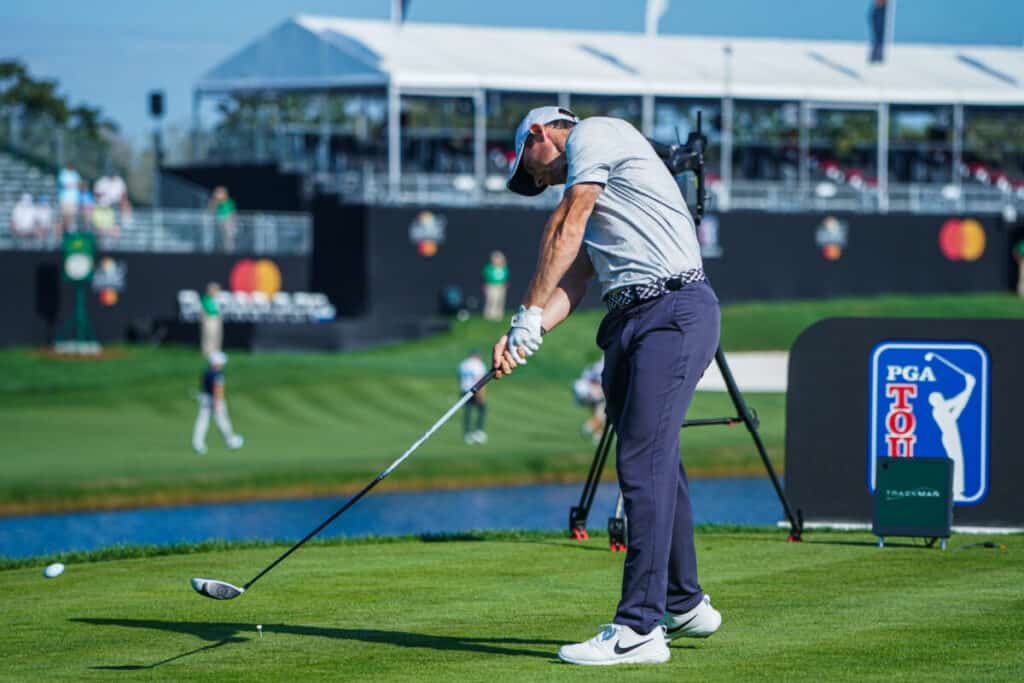
When you watch the PGA Tour or any major championship on TV it is hard not to notice how far pro golfers hit the ball.
Their drives seem to always go miles and I don’t know about you but I’m always checking myself to think whether I indeed heard the commentator correctly that they are actually hitting that high an iron for that 200+ yard approach shot.
So just to confirm what we are indeed up against we took a detailed look at just how far the top pros are hitting their clubs.
On average pros drive the ball a total of 296.6 yards (yds) according to official PGA Shotlink data. They hit a 3-wood an average carry distance of 249 yds, a 5-wood 235 yds and 3-hybrids 230 yds. 3-irons average 217 yds, 4-irons 208 yds, 5-irons 199 yds, 6-irons 188 yds, 7-irons 177 yds, 8-irons 164 yds and 9-irons 153 yds.
These high-level numbers of course don’t always tell the whole story as the pros like us are faced with an infinite variety of golf shots which don’t always mean they are hitting each club as far as they possibly can for every shot.
But if you take the averages over a season you are going to get more than a good idea of how far the pros are hitting each club.
What is fascinating also though as you dig more into the figures is the distance control options the best players in the world have with almost every club in their bag!

How Far Do Pros Hit Their Driver and Woods?
When it comes to talking about distance in golf the easiest and most obvious place to start is of course always with the longest club in the golf bag – the driver.
And as it is highly unlikely even the best pros in the world never want to hit their driver as far as they can so it is clearly the club we are going to get the best idea of the maximum distance they hit the ball.
So how far do pros drive?
PGA Tour players hit their driver a ‘total’ of 296.6 yards on average with a ‘carry’ distance of 284.3 yards according to official 2022 Shotlink data. The longest player hits it 320 yards on average and the longest recorded drive in 2022 is 460 yards. On the LPGA Tour the top pros hit their driver an average of 257.7 yards.
When it comes to how far the pros hit a 3 wood and the other longer clubs in the bag including their hybrids the distance analysis gets a bit more complicated because clearly the pros are starting to use these clubs for a wider variety type of shots than they do for their driver.
The pros, like the rest of us, will be hitting a driver as far as they can 99% of the time but when it comes to their 3-wood, 5-wood and hybrids they can be using those clubs off the tee and for approach shots and will not always be aiming for their maximum yardage with those clubs.
The best distance comparison we have for those clubs is therefore the ‘carry distance’. In other words the distance from where they hit the ball to the point of impact on the ground.
On average PGA Tour pros hit a 3-wood a ‘carry’ distance of 249 yards. By comparison a 5-wood carries 235 yards and hit a 3 hybrid, which measures from 19º to 21º, an average carry distance of 230 yards. On the LPGA Tour the top women pros carry a 3-wood 195 yards, a 5-wood 185 yards and a 7-wood 174 yards on average.
For those of you interested in how these averages compare to individual pros we have listed in the table below the average ‘stock’ carry yardages for a selection of the top pros when it comes to how far they hit their driver.
In the following table the list shows how far a selection of PGA and LPGA Tour pros hit their 3-wood, 5-wood and hybrid clubs.
[Note – If you are interested in what drivers and fairway woods the top 100 PGA Tour players are using check out the in-depth analysis we have done here .]
How Far Do Pros Hit Their Irons? Remember to Take Stock
Looking at how far pros hit their irons is a much easier task these days due to all the tracking technology that exists however it still does not make it an exact science.
And that is for the simple reason that pros will hit all manner of a variety of different shots with their irons, especially for their approach shots, and as such, they will hit the same iron a variety of different distances.
A look at Brooks Koepka’s yardage book below gives us a great insight into this and highlights how many types of shots pros can play with their irons.
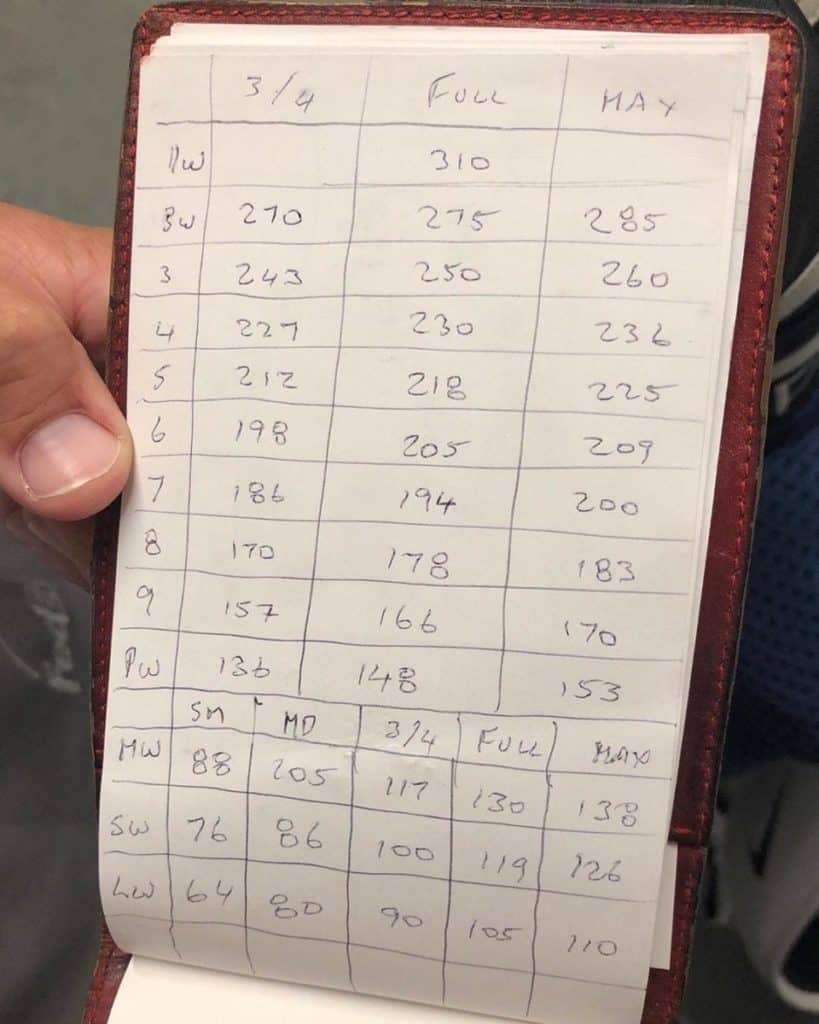
For example for a 170 yard shot into the green a quick glance at his iron yardages shows he could decide to play either a three-quarter 8-iron or try to hit a 9-iron as far as he can – his ‘max’ distance for that club.
When you account for factors such as wind, elevation, ground conditions and also the context in which the shot is being played Koepka, like all the pros, has a number of options for each iron shot which makes the question of how far he hits each iron a bit more complex than at first you may think.
However the pros have what is called a ‘stock’ yardage for their irons, which equates essentially to the average distance they will hit a full shot with each iron swinging normally.
When we compare these ‘stock yardages’ for irons between the pros we get a consistent view of yardage which we can accurately compare across the players.
On average PGA pros hit a 3-iron a ‘carry’ distance – the distance from strike to point of ground impact – of 217 yards. They hit 4-irons 208 yards and 5-irons 199 yards on average. For 6-irons the average is 188 yards, for 7-irons it is 177 yards and 8-irons, 9-irons and pitching wedges go 164, 153 and 141 yards respectively.
Different pros however clearly hit their irons different distances but in the table below we have listed the ‘stock yardages’ of some of the top pros, including Rory McIlroy, Dustin Johnson, Justin Thomas and Bryson DeChambeau, to let you see how they compare against the average.
And when it comes to how far Tiger Woods, arguably the greatest iron player of all time, hits his irons?
Tiger hits his 3-iron a ‘carry’ distance of 240 yards on average while his 4-iron goes 225 yards and 5-iron 210 yards. When it comes to his mid-irons he hits his 6-iron and 7-iron 195 and 180 yards. As for his short irons his 8-iron yardage is 165, he hits his 9-iron 150 yards and his pitching wedge 135 yards on average.
How Far Do Pros Hit Their Wedges
When it comes to looking at how far the pros hit their wedges the stock yardage they hit each club is again obviously only one of the multiple yardages they can hit the most versatile clubs in any player’s golf bag.
As we can again see from Brooks Koepka’s yardage book above he has 5 different yardages listed for each of his specialist wedges which highlights just how much distance control the best golfers in the world can exert with their wedges.
Another added complication when it comes to comparing the distances that the pros hit their wedges is the differing lofts each of them often carries for seemingly the same club.
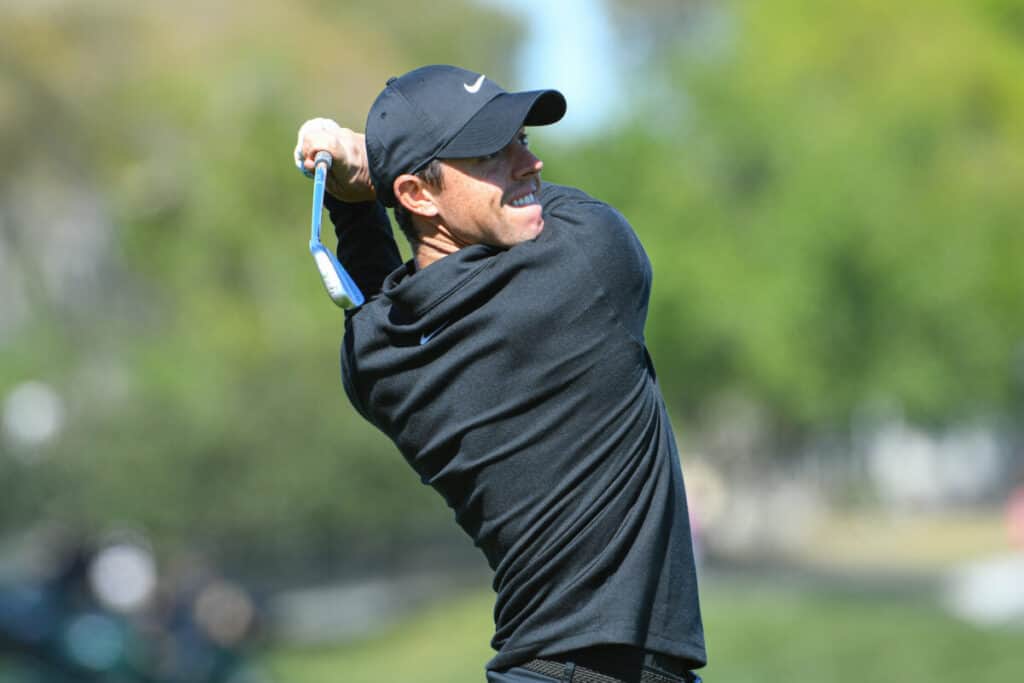
For example while one pro’s ‘gap wedge’ may be 50º another may choose 53 or even 54º for that same ‘gap wedge’ club and with such a difference in lofts it becomes very difficult to compare with any meaning how far the pros hit the same-named wedge.
Assuming however the pros are hitting ‘standard’ lofted pitching, gap, sand and lob wedges we found the following stock distances for how far the pros hit them .
As a whole PGA pros hit their pitching wedge an average carry distance of 141 yards. They hit 52º gap wedges a stock carry distance of between 126 and 135 yards and carry 56º sand wedges an average distance of 119 to 124 yards. Standard 60º lob wedges meanwhile carry 95 to 105 yards on average.
While these yardages will give you a general guide as to how far pros hit their wedges it is important to remember how particular all the pros are about these clubs especially.
It is vital for them to know exactly how far they hit their wedges with a variety of different types of shots because feel is so important from those short distances, especially at the top level of the game, where a yard or two can make the difference between winning or losing a tournament.
That is why you will find some pros’ wedges measured up to 0.5º or even 0.25º when listed and it is also likely that some of the actual strengths of the wedge lofts they use may in reality be stronger (i.e. a lower loft) or a touch weaker (i.e. a higher loft) than the actual degree loft number shown on their club.
To help however answer the question as well as we can the table below shows the varying distances some of the top pros, including Tiger Woods, Rory McIlroy and Dustin Johnson, are hitting their wedges, together with the degrees of loft their clubs are listed at.
Before you go …
While it is great to find out how far the top players are hitting the ball it is even better to know the reasons why they achieve the huge distances they get.
Is it simply down to the fact that they have access to the latest and best equipment or is it something else?
Read our next article to discover the real reasons the pros hit the ball as far as they do, and how you can potentially add 20 to 30 yards to your drives!
How Do Pros Hit the Ball So Far?
Other top articles related to this topic:
- How Far Should You Hit a Driver? FULL GUIDE By Age, Handicap etc.
- How Far Does a 3 Wood vs 5 Wood Go? Tee and Approach Shots!
- How Far Should I Hit My Hybrids? 2 vs 3 vs 4 Hybrid Distances
- Hybrids vs. Fairway Woods – FULL Distance and Comparison Guide
- How Far Should I Hit My Irons? By Handicap, Age & Swingspeed
- How Far Should You Hit Your Wedges? Be Sure to Fill the Gaps!
- Why Don’t Your Drives Go Far? Slow and Steady Loses the Race
- How Far Should Your Driver Swingspeed Go? 60 to 120 mph Guide
- Average Driver Swingspeeds? COMPLETE GUIDE by Age, Handicap etc.
- Ideal Spin Rate and Launch Angle for Driver? That’s Personal!
- How Far Should Your Ball Speed Go? 100mph All the Way to 210mph!
- The PGA Tour’s Rising Driver Ball Speeds Mean One Thing – $$
- What Should Your Driver Attack Angle Be? Try Not to Be Negative
- How Much Does Driver Loft Affect Distance? Loft is Dynamic Too!
- 10 Ways to Get More Distance off The Tee With & Without Speed!
- What Determines Driver Distance? Skill Triumphs Over All!
- Are Driving Range Distances Accurate? Golf Balls are a Problem
- Do All Golf Balls Go the Same Distance? Physics First
- What Affects Golf Ball Distance? Beware ALL the Uncontrollables!
- Do Certain Golf Balls Go Further? Brand and Cost Considerations
- Do Distance Balls Go Further? Marketing Matters
Leave a Reply Cancel reply
Your email address will not be published. Required fields are marked *
Save my name, email, and website in this browser for the next time I comment.
RECENT ARTICLES

What Golf Balls Do LPGA Players Use? They’re Not Very Lady Like! (2024 update)

Behind Every Stroke: The Most Popular Putter on Champions Tour (2024)

Champions Hybrid Heroes. Most Used Hybrids by Champions Tour Pros (2024)

The Go-To Fairway Woods of Senior Tour Champions (2024)

Flexible Friends: Uncovering the Shafts Champions Tour Players Use (2024)
LEGAL INFORMATION
This site is owned and operated by Golfing Focus Limited, a private limited company whose registered office is in London, UK. Golfing Focus Limited is a participant in the Amazon Services LLC Associates Program, an affiliate advertising program designed to provide a means for sites to earn advertising fees (at no cost to you) by linking to Amazon.com. Golfing Focus Limited also participates in other affiliate programs with the eBay Partner Network, FlexOffers, CJ.com, Svorn and other sites and is compensated for referring traffic and business to these companies (again at no cost to you).
Our Socials
How Far PGA Tour Players Hit Every Club In The Bag
The latest Trackman data has revealed the average distances and speeds from shots hit on the PGA Tour
- Sign up to Golf Monthly Newsletter Newsletter
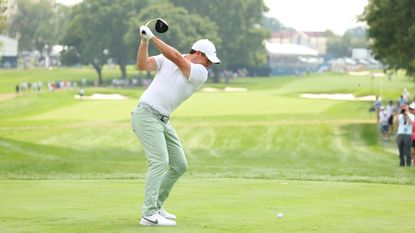
In this age of ultra-long hitters and ever-increasing technology among the golf-equipment sector, the distances and speeds in the professional game continue to go one way - up.
It is not quite the same among the amateur population , however, with Arccos data via the USGA and R&A in March 2022 revealing that the average male golfer - with a handicap - hits their total drive around 215 yards , a number that has remained relatively consistent over the past five years. Meanwhile, in the women's game, the average total-driving distance for players of all abilities is just shy of 148 yards.
But the latest numbers released by Trackman show that PGA Tour professionals are sending it a long way past that, as you would expect. The average carry distance for a PGA Tour pro with a driver in hand during 2023 was 282 yards.
Their club speed was usually around 115mph with a driver and the resulting ball speed averages 171mph, reaching a max height of just 35 yards off the ground.
Despite a 33-yard drop-off between driver and 3-wood, in regard to carry, PGA Tour players are still averaging 249 yards carry with the latter and bettering the average distance your leading amateur can manage with the big dog.
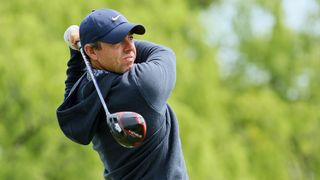
Rory McIlroy is the longest average driver on the PGA Tour and is known for his high ball-flight
From 3-wood down, between 5-13 yards of carry was lost as you move through the bag. PGA Tour players typically hit a 5-wood 236 yards in 2023, while - surprisingly - the number dropped to just 231 with a hybrid.
The numbers between the two aforementioned clubs are particularly interesting to take a closer look at, with players generating 106mph club speed with a 5-wood and 102mph with a hybrid. The angle of attack was almost identical, and the smash factor for both clubs was exactly the same at 1.47 out of 1.5.
Get the Golf Monthly Newsletter
Subscribe to the Golf Monthly newsletter to stay up to date with all the latest tour news, equipment news, reviews, head-to-heads and buyer’s guides from our team of experienced experts.
Ball speed differed by 7mph (156mph - 5w/149mph Hy) but the spin rate difference was much more noticeable at 4322rpm for the 5-wood and 4587rpm for the hybrid. Ultimately, though, the total carry resulted in just a five yard drop off for the shorter club.
Moving into the irons, PGA Tour players averaged 218 yards carry with a 3-iron (100mph CHS/145mph BS) and 199 yards with a 5-iron (96mph CHS/135mph BS), and as the club becomes shorter - predictably - so do the numbers.
When looking at the 7-iron, the total carry distance on the PGA Tour was 176 yards thanks to 92mph club speed and 123mph ball speed. PGA Tour players struck their shortest club - the pitching wedge - around 142 yards (carry) in 2023, according to the Trackman data.
Updated PGA Tour Averages released by @TrackManGolf It’s been a while since they have released updated CHS, distances, AOA, launch angles etcBookmark for future reference and see how you compare 👊🏼 pic.twitter.com/iyySMw41xZ May 2, 2024
HOW FAR DO PGA TOUR PLAYERS HIT EVERY CLUB IN THE BAG?
Data: Trackman, 2024
Jonny Leighfield is our Staff News Writer who joined Golf Monthly just in time for the 2023 Solheim Cup and Ryder Cup. He graduated from the University of Brighton with a degree in Sport Journalism in 2017 and spent almost five years as the sole sports reporter at his local newspaper. An improving golfer who still classes himself as ‘one of the worst players on the Golf Monthly team’, Jonny enjoys playing as much as he can and is hoping to reach his Handicap goal of 18 at some stage. He attended both the 150th and 151st Opens and is keen to make it an annual pilgrimage.
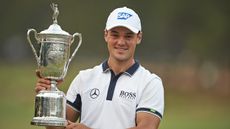
Martin Kaymer hopes a return to Pinehurst will give his game a spark as he still struggles with the fact that US Open win a decade ago was his last tournament victory
By Paul Higham Published 6 June 24

Robert MacIntyre has just won his first PGA Tour event - and now the 27-year-old has aspirations of taking his career to the next level...
By Jonny Leighfield Published 6 June 24

Bhatia's fiancée was once his caddie despite knowing "nothing about golf" when they first met...
By Jonny Leighfield Published 7 April 24

We take a look into the bag of 2023 PGA Tour Rookie Of The Year, Eric Cole
By Sam De'Ath Published 28 February 24

We take a look at the clubs that the record-breaking young American is currently using...
By Dan Parker Published 27 February 24

We take a look at what clubs the first French PGA Tour winner is currently using...
By Joe Ferguson Published 27 February 24

We take a look into the bag of winning PGA Tour rookie Jake Knapp
By Sam De'Ath Published 26 February 24
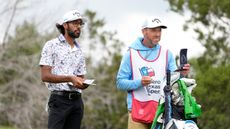
Who currently carries the bag for American Akshay Bhatia? We take a look here
By Jonny Leighfield Last updated 7 April 24

We take a look inside the bag of American Chris Kirk...
By Sam Tremlett Last updated 28 February 24

We take a look inside the bag of professional golfer Sahith Theegala...
By Sam Tremlett Last updated 29 February 24
- Contact Future's experts
- Terms and conditions
- Privacy policy
- Accessibility statement
- Cookies policy
- Advertise with us
Golf Monthly is part of Future plc, an international media group and leading digital publisher. Visit our corporate site . © Future Publishing Limited Quay House, The Ambury, Bath BA1 1UA. All rights reserved. England and Wales company registration number 2008885.
What Is the Average Distance With Each Golf Club?
This golf club distance chart can help your game
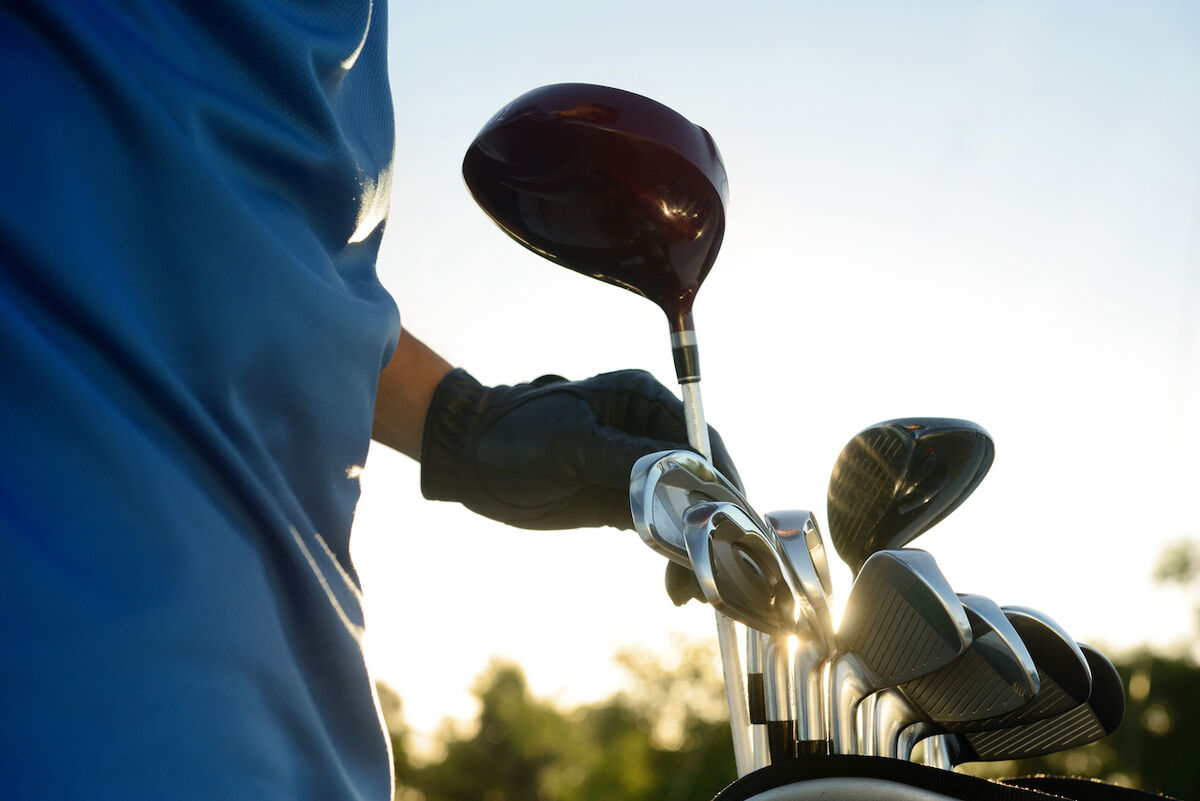
- DESCRIPTION Golfer pulling driver out of club bag
- SOURCE woraput/E+
- PERMISSION Getty Images License
The average distance golfers hit each club varies widely. A PGA Tour player hits a 7-iron between 172-215 yards. Meanwhile, a short-hitting amateur male golfer averages 120 yards with the same club.
Average Golf Club Distance Chart
Here's how far mid-handicap male golfers can expect to hit each club. Of course, specific distances for each individual player will vary based on several factors, which we'll detail shortly.
According to the USGA, golf’s governing body in the United States, the average male amateur golfer hits driver 217 yards , as recently as 2019. That same year, the PGA Tour average driving distance was 293.9 yards. Men, women, seniors, juniors, professionals, amateurs and beginners all hit their clubs different distances. The following golf club distance charts break down the average distances of golfers at many different levels of the game.
Key Factors to Achieve Distance
The total distance achieved by a golf club is based on several factors, including swing speed, the club’s loft, the carry distance achieved (Note: The carry distance is the yardage from the point of impact to the point of landing.), and even the weather.
Swing Speed
The faster your swing speed, the greater the distance. According to TrackMan , the average PGA Tour player has a driver club speed of 113 MPH, resulting in a 275 yard carry. Meanwhile, LPGA Tour players average 94 MPH with driver, and carry the ball 218 yards.
Since we know that amateur male golfers hit driver an average of 217 yards, we can infer that average male golfers and LPGA Tour players have similar swing speeds, making the LPGA Tour average distances with each club a good benchmark for average amateur male golfers.
Each club face has a unique loft. For example, a driver is designed for distance and usually has only 8-13 degrees of loft. In comparison, a pitching wedge is designed to get airborne, with 41-46 degrees of loft .

How to Accurately Measure How Far You Hit Your Clubs
According to thegolfmentor.com , distances achieved by short, mid and long hitters can vary by as much as 50% depending on the club and the gender (see actual average distance ranges below). Men tend to have faster swing speeds and hit the ball farther. However, many women are long hitters, with some LPGA pros hitting the ball as far, or farther, than men.
Distance can be greatly affected by the weather conditions. Hitting a ball into a strong wind will greatly influence distance, and a dry golf course will give you more roll, and therefore more distance, than a soggy course.
Average Distances for Men
Average distances for senior tour players.

The 10 Best Drivers for Senior Golfers in 2023 for Huge Distance
Average Distances for PGA Tour Players
Average distances for women.
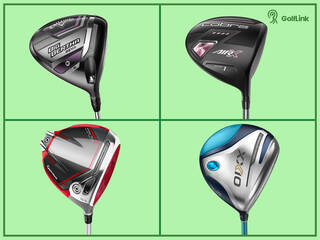
The 9 Best Drivers for Women of 2023
Average Distances for LPGA Tour Players
Tip: chart your distances for all your clubs.
Keep track of your average golf stats and scores with GolfLink's personalized game tracker. Sign up for free and create yours now!
Go to the driving range and hit ten golf balls with each club. Keep track of the ten distances you achieve with each club. Repeat the charting monthly, or more frequently if you are actively working on your swing.
The distance achieved by a specific golf club will vary from player to player and from day to day based on the conditions. Tour distance information was compiled from stats on pgatour.com, lpga.com, TrackMan.com and golfwrx.com.
Trackman Tour Averages
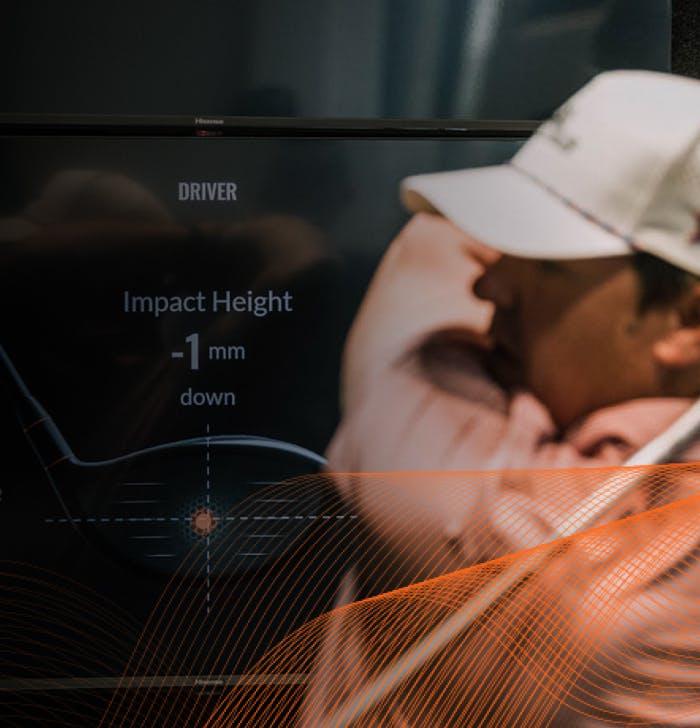
At Trackman, we're dedicated to providing the most accurate and up-to-date data to enhance your golfing experience. That's why we're excited to announce the release of our new Tour Averages, reflecting the latest insights from leading professional golf tours.
How We Gathered the Data
Our team has been hard at work collecting data from a wide range of pro players, utilizing Trackman technology to capture every swing and shot with precision.
Explore the New Tour Averages
Discover the latest numbers for both PGA and LPGA Tours, now presented in a redesigned format for easy reference. To see how the game has progressed over time, check out this link to see what’s changed compared to the last Tour Averages.
What's Changed Since Last Time
Since Trackman last revealed the Tour Averages, certain areas of the game have changed. When driving, for instance, players are now hitting further, with greater ball speed and less spin rate. See how your figures compare to the pros.
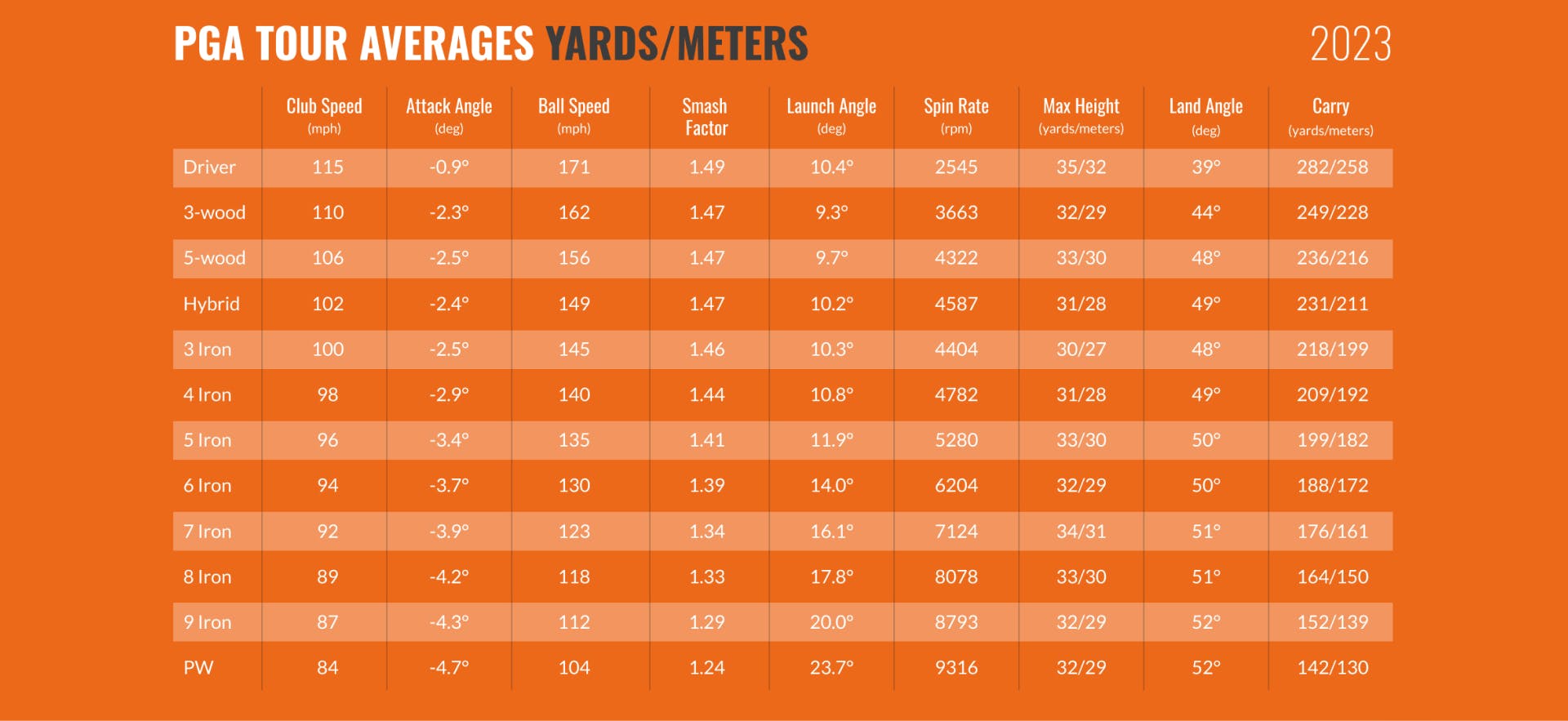
The Impact of Trackman
Trackman's role in driving performance gains cannot be understated. From influencing club manufacture to revolutionizing training methods and making data more accessible, Trackman continues to shape the future of golf.
Stay Informed
Whether you're a seasoned pro or a weekend warrior, Trackman is here to help you reach new heights on the course. So stay tuned for more updates and insights from Trackman as we continue to push the boundaries of golf technology.
Get the New Tour Assets
The updated Tour Averages data is available for download here in various formats (incl. in meters or yards), whether you're a coaching professional or simply want them handy on your phone when you're on the range.
Key Insights:
Male data is captured across 40+ different events and 200+ different players.
Data is captured at both PGA TOUR and DP World Tour events with majority coming from PGA TOUR events.
Female data is captured across 30+ different events and 150+ different players.
Data is captured at both LPGA and LET events with majority coming from LPGA events.
Averages are based on data from competition as well as on the range.
There are multiple processes in place to eliminate shots hit with a non-driver during competition.
There could be a small number of non-driver shots in the dataset (less than 0.5 percent).
Official stat holes are picked going in opposite directions to reduce any effects from wind.
Golf Club Distances w/ Chart | Averages for Am & Pro Players
Last Updated on July 25, 2021
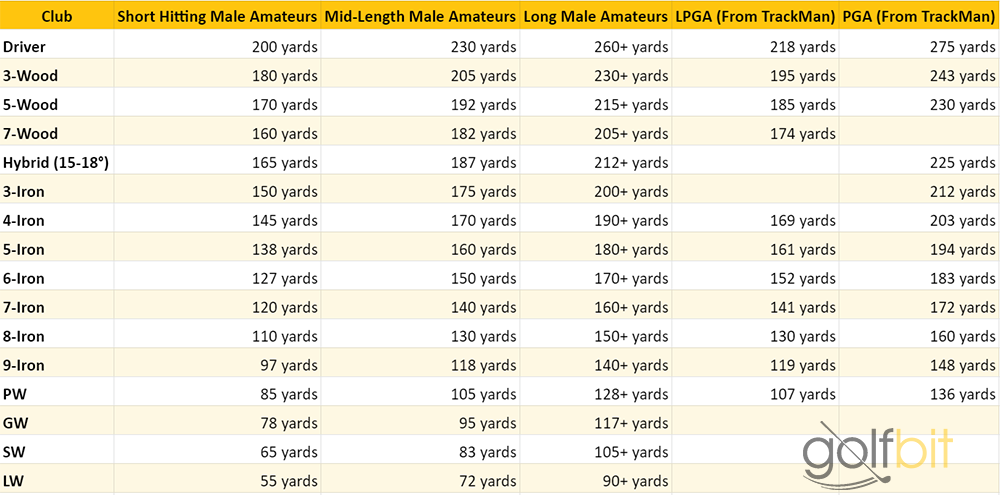
Distance is critical in golf. As golfers, we're always striving for more distance off the tee and consistent yardage gaps between the rest of our clubs.
In this guide, we'll break down how far amateur golfers of various skill levels and swing speeds hit each of their clubs to give you an idea of how you stack up. We've also included PGA and LPGA carry distance averages to see how you compare with the pros.
After that, we'll cover what factors affect your golf club distances and explain how to find out how far you hit each club.
Golf Club Distances Table
The table below shows how far golfers of various skill levels and swing speeds hit each club.
We've included PGA and LPGA carry distance averages of professional golfers that TrackMan gathered .
For amateur male golfers, we've split them into groups of "short," "mid," and "long" hitters. All distances refer to carry distance (distance until the ball first hits the ground) rather than total distance (carry and roll).
While TrackMan gathered extremely accurate data for LPGA and PGA carry distance averages, good data for amateurs is harder to come by.
There's a massive gap in skill-level and swing speeds among amateur golfers. Golfers of various handicaps also achieve their handicaps in a variety of ways. A 5-handicap golfer could be a super fast swinger in their athletic prime or a senior golfer who has lost distance over the years.
For our amateur short, mid, and long hitting male amateur distances, we relied on the limited available large sample data and what we've seen personally from loads of amateur golfers.
Because these yardages are for golfers of all ages, junior, middle-aged, and especially senior golfers may find themselves with distances closer to the "Short Hitting Male Amateurs" column. Most young adult to middle-aged male golfers should carry the ball to at least the "Mid-Length Male Amateurs" distances, while faster swingers of these ages can reach the distances in the "Long Male Amateurs" column.
Lastly, aside from LPGA professionals, we didn't include other female golfers in our distance table. There's even less data available for amateur female golfers than for male amateurs. We've also found a more considerable disparity in how far female recreational players hit the ball. Basically, we weren't confident we could provide any accurate/valuable information for female amateurs' distances.
What Affects Distance in Golf
There are a lot of factors that influence your golf club distances.
Club speed is the most significant factor in determining distance .
To illustrate this, look at the correlation of club head speed vs carry distance for PGA Tour players in the scatter plot below:

Assuming all other things are equal, more swing speed means more energy that can be transferred from the club to the golf ball, resulting in higher ball speed. Higher ball speed means the ball will travel a further distance.
Factors like impact location on the club face, club path, spin rate, and launch angle also play a large part in how far a ball travels.
Impact Location Golf Iron and Driver Sweet Spot
An impact out of the "sweet spot" of your irons or woods will lead to a higher smash factor than strikes that are too low, too high, off the toe, or off the heel.
Smash factor is a calculation of how well you converted club speed into ball speed (Smash Factor = Ball Speed / Club Speed).
In particular, strikes out of the heel and low strikes can kill distance with the driver.

If you struggle to consistently hit the ball with or near the sweet spot of your club face, you'll have issues with the consistency of your yardages.
Spin Rate and Club Path
Spin rate plays a large role in how far you'll hit the ball and the shapes of your shots.
A lot of golfers put too much spin on the ball with their driver either because of too much club loft, poor strikes (bad impact location), or poor club face control (the direction the club face is aimed relative to your swing path).
If you feel you're hitting the ball well but should be getting a few more yards, work with a club-fitter to see if your driver has too much loft. The ideal spin rate depends on your club speed , but too much spin will cost you yards.
Slices and hooks are caused by the club face being aimed too open ( slice ) or too closed ( hook ) relative to the club path. This can lead to both too much spin and the ball's spin axis being too strongly left-to-right or right-to-left.

If your club face is open (aimed right) relative to your club path, this can both cause too much spin and will cause the ball to spin too left-to-right on its spin axis . You'll lose a lot of yards from a slice as the ball travels left-to-right rather than straight.
Launch Angle
For each club, there is an optimal amount of spin and an optimal launch angle. Launch angle is the angle of a golf ball's initial ascent relative to the ground.
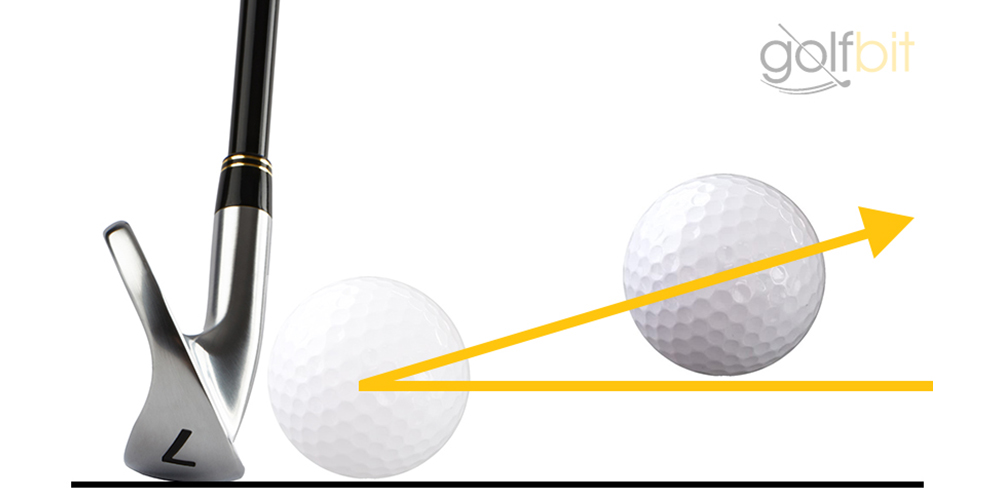
Launching the ball too high or too low will cost you distance.
While launch angle problems could be due to your swing, they can also be caused by playing the wrong clubs for your swing. If you feel like you're hitting the ball too high or too low, work with a club-fitter to dial in your clubs.
Factors Out of Your Control
There are also factors out of your control that can affect distance, like temperature and altitude.
Every 10 degrees that the temperature rises can easily lead to a couple of yards of additional ball flight with a driver.
If you drive the ball 240 yards at sea level, you will carry it around 255 yards in Denver's mile high altitude.
How to Find Your Distances
If you're looking to better understand how far you hit each club, we'd recommend purchasing a launch monitor or finding a range with a launch monitor.
To get accurate distances, you'll also want to make sure that you're hitting the same golf balls you normally play on the course.
Many golf ranges have cheap, inconsistent, or even balls purposefully made not to fly as far as normal golf balls.
Your typical range ball can easily cost you 10+ yards with the driver, while a limited flight range ball can lose you 30+ yards of distance with driver compared to a premium golf ball.
- Golf Terms Guide
- Golf Scoring Terms
- Best Golf Rangefinder
- What to Wear Golfing
- Terms of Service
- Privacy Policy
- Affiliate Disclosure
GOLF CLUB DISTANCES: PGA Tour and LPGA Tour pros vs Men and Women
How much further do PGA Tour and LPGA Tour pros hit the ball compared to us amateur golfers? The average distances might surprise you.

Ever wondered how much further a PGA Tour and LPGA Tour pro hits the ball compared to male and female amateur golfer? Well you will want to check out the latest shot data below, which higlights the average distance for each club in the bag.
The following average distances for men and women and PGA Tour and LPGA Tour pros have been calcuated by The Golf Mentor , and they measured in yards.

AVERAGE DISTANCES FOR MEN
The three different yardages provided for each club below are based on the averages for short hitters, mid hitters and longer hitters.
DRIVER: 200, 230, 260 3-WOOD: 180, 215, 235 5-WOOD: 170, 195, 210 3-IRON: 160, 180, 200 4-IRON: 150, 170, 180 5-IRON: 140, 160, 170 6-IRON: 130, 150, 160 7-IRON: 120, 140, 150 8-IRON: 110, 130, 140 9-IRON: 95, 115, 130 PW: 80, 105, 120
AVERAGE DISTANCES FOR PGA TOUR PLAYERS
DRIVER: 289-323 3-WOOD: 243-304 5-WOOD: 230-288 3-IRON: 212-265 4-IRON: 203-254 5-IRON: 194-243 6-IRON: 183-229 7-IRON: 172-215 8-IRON: 160-200 9-IRON: 148-185 PW: 80, 105, 120
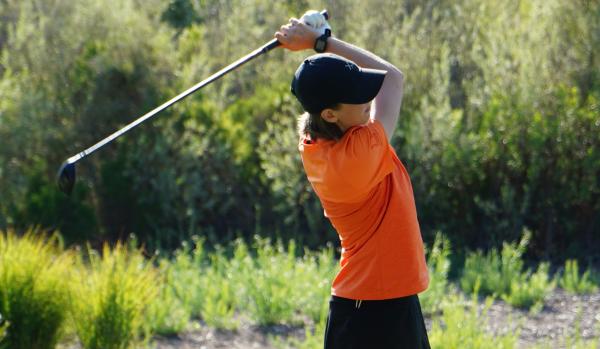
AVERAGE DISTANCES FOR WOMEN
DRIVER: 150, 175, 200 3-WOOD: 125, 150, 180 5-WOOD: 115, 135, 170 3-IRON: 100, 125, 160 4-IRON: 90, 120, 150 5-IRON: 80, 110, 140 6-IRON: 70, 100, 130 7-IRON: 65, 90, 120 8-IRON: 60, 80, 110 9-IRON: 55, 70, 95 PW: 50, 60, 80
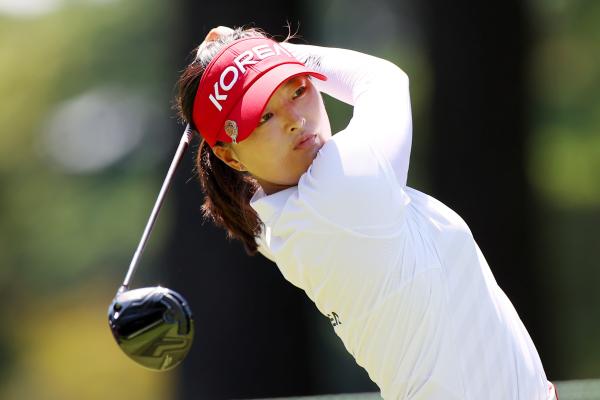
AVERAGE DISTANCES FOR LPGA TOUR PLAYERS
DRIVER: 246-258 3-WOOD: 195-217 5-WOOD: 185-205 3-IRON: 180-192 4-IRON: 170-181 5-IRON: 161-173 6-IRON: 152-163 7-IRON: 141-154 8-IRON: 130-143 9-IRON: 119-132 PW: 107-121
How far do you hit the golf ball with each of your clubs? Are you above or below the averages highlighted above? Share your thoughts and comments over on our social media platforms - Facebook, Instagram and Twitter - or come and visit our GolfMagic YouTube Channel.
Sponsored posts, latest news.
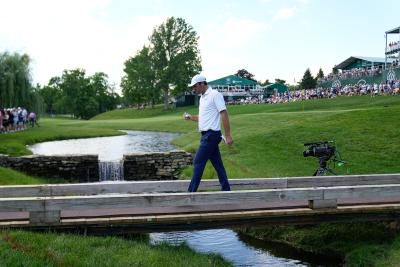
Latest Reviews
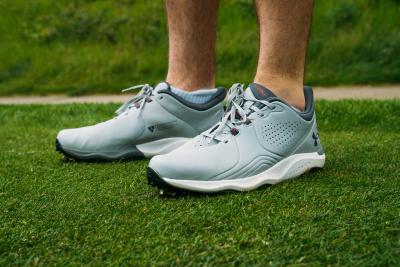

How Far Do You Hit It: The Average Distance Per Golf Club
“How far do you hit it?”
This is a question that pretty much every golfer who has ever played the game has uttered countless times. When it comes to things golfers say to one and other, distance is inevitably one of the first talking points.
And now, distance is more prevalent than ever before.
While Tiger Woods stirred the distance debate when he came out ripping his steel shaft Titleist driver in the late 90s, Bryson DeChambeau is doing it in 2021. It seems like every piece of golf news has something to do with distance.
But it kind of makes sense, distance applies to the everyday golfer as well. In general, the further you hit it, the easier the game “should” be.
You might have even thought, “How far do average golfers actually hit it anyways?”
While I wish there was a study that made it simple and easy to understand, there are just too many variables. But that didn’t stop us from coming up with some average distances for a regular golfer and Tour players. Plus, in this post we’ll break down 7 awesome strategies to help you add distance to your game.
Average Golf Club Distance
Distance matters now like never before.
Golf course designers continue to keep stretching the normal for average course length, making it more challenging for the everyday golfer. Some argue it’s a necessary evil, while others say it’s bad for the game.
We’ll let the guys on the Golf Channel debate if it’s good for the game and instead focus on giving you the information you need.
So how far should you hit each club?
Here is a breakdown for male golfers (based on swing speed, not distance by age):
Average Male Club Distances
After researching tons of different articles and studies, here is a general guideline for how far each club should travel. Please note, this is carry distance , not total distance which includes roll out.

Again, this is an educated guess as pretty much no two golfers swing exactly the same. As you continue to read this article, you’ll find there are tons of things that factor into total distance.
Average Distance for PGA Tour Players
If you’re like most golfers, you’ve probably asked yourself, “How far do the pros hit each club?”
As you probably know, PGA Tour Players are playing a different type of game that most of us everyday golfers. But they get paid a lot of money to compete, so it makes sense they’re a bit better than most of us weekend warriors.
Thanks to a recent study from Trackman and Golf.com , here is a breakdown of the carry distance for each club for PGA Tour players. Plus, this helpful chart also has other stats like ball speed, attack angle, launch angle, spin rate , and more.
Average Driving Distance for PGA Tour Players and LPGA Tour Players
It’s pretty fun to review the trackman numbers because it’s very eye-opening for a lot of golfers.
The average driver distance for a PGA Tour player is only 275 yards . I say “only” because when you watch them on TV, sometimes their driver distance is 320-360 yards. When compared to your game, you feel like you would be 80-100 yards behind them if you played together.
So why aren’t the numbers more consistent with what we see on TV?
A few different factors:
- Carry distance vs. total distance. Remember that PGA Tour players are playing the best courses in the world and usually have very firm fairways. That 275 yard driver distance can easily turn into 300 or more yards when you consider roll out. Plus, they might get wind and elevation changes in their favor as well. Not to mention, the PGA Tour schedule is played in the best weather for that time of year (like Hawaii in January, Florida in March, etc.). Better weather means longer driver distance, even for short hitters in the field.
- TV coverage is usually showing us the highlight reels to keep us entertained. They don’t show the boring 280 drives that find the fairway because they’re not as exciting as the occasional bomb. Average driving distance doesn’t keep viewers tuned in but Bryson swinging out of his shoes is quite entertaining.
Don’t get me wrong, these guys are wildly talented, but they’re also playing the best courses with the newest golf clubs available. Paired with perfect weather, swing coaches, and personal trainers, they’re inevitably going to hit it further than the everyday golfer.
What Impacts Driving Distance in Golf
Don’t live and by these numbers though, especially the average driving distance. Let’s review what actually impacts distance in each golf club.
The first thing is loft. Simple rule: the lower the loft, the longer it goes.
That’s why your 8-12 degree driver goes 250+ yards, while your pitching wedge maybe only goes 100-130 yards. Less loft equals more distance.
Another thing to think about though is how much stronger the loft has gotten with standard clubs in recent years. Now, a pitching wedge might be 42-44 degrees , which is more like a 9 iron by traditional standards.
Naturally, the lower the loft the further the ball will travel.
Now that you understand the role of loft in distance, here are some other things to think about:
Shaft (Weight and Flex)
The shaft that you play has a huge impact on total distance as well. For example, if you’re a high handicap golfer and playing a stiff steel shaft, you’re making the game much harder on yourself.
Since distance comes from speed, you need to make sure that your shafts match your game. If your shaft is too heavy or too stiff, it’s nearly impossible to hit the ball the way you want. To play your best golf game, invest in shafts that match your swing and club speeds.
Swing Speed
Another important factor for every golfer, if not the most important factor, with distance is swing speed. As you can tell from the PGA Tour charts from Trackman, speed is highest with the driver and the least with a pitching wedge.
The higher the swing speed, the longer hitter you’ll become. Keep reading this article to learn some strategies to increase your speed (even if you’re a beginner). Go here for our full article on swing speed .
Also, don’t forget about the actual clubhead as well. One of the reasons a driver goes so long is the loft and length of the club. But the clubhead itself is also much bigger than say a 7 wood.
The clubhead you choose can definitely add some yards. For example, I was experimenting with a 19 degree hybrid vs. my 19 degree 5-wood at the driving range. Both had the same shaft and loft, but the 5 wood went 5-10 yards further every time.
Because think about it, the clubhead of a 5-wood is much larger than a hybrid. That extra size makes the golf ball go further, but also yielded bigger misses as well. This is especially important to think about when finding your higher loft woods vs. hybrids vs. long irons.
Age & Health
Your overall health and age also play a factor in total distance from pitching wedge to your driver. When you get older, you naturally lose strength and can lose flexibility (unless you’re Greg Norman). This can result in losing distance and typically not hitting as far as you’d probably like.
But with consistent exercise and stretching, amateurs of all age and skill can offset father time. Just look at Gary Player!
Despite being 85 years old at the time of this post, he’s in absolutely incredible shape. It just goes to show that with consistency and hard work, anything is possible regardless of age.
Go here to read our full article on playing great as a senior.
Weather Conditions
Weather can play a huge role in your total distance too.
One of the many reasons we love golf so much is because we have to battle the elements. Whether it’s the extreme heat and mugginess of summer or the cold, wet, rainy conditions of winter. Not to mention, gusting winds as well.
Remember, golf is rarely played in perfect weather, so it’s important to factor in weather conditions when considering your distances.
Finally, the golf ball you play also impacts the total distance as well. The harder the golf ball, the longer it will go. But distance isn’t the only thing to think about when it comes to picking the right ball for your game.
Instead of just thinking about distance, you also want to pick a golf ball that has the right spin as well. Harder golf balls almost always have less spin. Unless you have enough swing speed, it’s going to be very challenging to get your approach shots to hold the green.
Plus, you also need to think about the spin around the green as well. All of these factors play a huge role in your total distance.
Golfers – Do This Next: 7 Tips to Increase Driver Distance
Now that you have some perspective on what the average golfer hits it vs. a PGA or LPGA Tour player and the average golfer, let’s talk about next steps. Even if you consider yourself a short hitter, these will help you out.
Here are seven proven strategies to help you improve your distances with any club in the bag.
1. Chart Your Yardages
The first thing should do is chart your yardages for every single club in your golf bag. Try to do this in your “normal” weather so that you have a benchmark data.
This is so important because when you know the yardage for each club, it’s so much easier to pick the right club on the course. If you’re out there guessing all day, it’s easy to end up way short or long. Then, you’ll have to scramble more around the greens to salvage a good score.
But when you know how far each club goes, you can be more aggressive and have confidence with each shot.
The easiest way to get this type of data is with a launch monitor . These small and powerful devices can help you get more comfortable with your distances so you are confident over every swing. From club speed to attack angle and all kinds of other data.
2. Improve Your Swing
The second thing to help you increaes your driver distance is to work on your swing . A few small tweaks to your tempo, takeaway, and downswing can result in big changes with any golf club.
For example, if you’re someone who comes over the top, you’re not hitting it as far as you can. An over the top, steep golf swing usually produces a pull cut (or slice) that kills distance. Plus, it doesn’t have nearly the amount of forward spin either.
Meanwhile, if you can learn how to shallow the golf club , you can almost instantly hit it further thanks to a square club face.
First, you’ll get more carry distance because you’ll hit the club with a more square face but more forward spin too. When you shallow the club and roll your hands for a draw swing, you get an extra roll-out as well.
This is just one example of how changing your swing can impact your clubhead and ball speed . But there are tons of other factors as well.
The more shots you can hit, the better course strategy you can have. Work with a coach or go through some of our most popular blog posts here to find ways to sharpen your swing:
- Golf Grip 101: How to Grip the Club
- Alignment for Beginners: How to Set Up Square
- Master the Takeaway: Everything You Need to Know
3. Hit the Gym to Increase Driving Distance
The third way to become a long hitter is with good old-fashioned strength training. Tiger Woods revolutionized working out for golf the past 20 years and now, nearly every PGA Tour player hits the gym regularly.
Before running straight to the gym though, make sure you’re healthy enough to do it. Don’t go to the gym and start throwing weights around if you haven’t been in years. Always check with a doctor and put your own health and safety first.
Once you’re good to go, start small and work your way up. Remember to build muscle, you first have to break it down so that you can build it back up.
Click here to learn more about golf workouts.
While gaining strength is important, don’t forget about stretching too.
You always want to make sure you’re flexible enough to swing the club comfortably and avoid injury. Even if it’s 5-10 minutes before you head to the course or on the driving range, it can make a huge difference in total distances.
Pretty soon your driver will be producing long distance bombs like Bryson!
4. Get Fitted For The Right Golf Clubs
If you want to increase distances to your game and become a long hitter, make sure you get properly fitted . Most golfers never do get fitted and instead, play off the rack clubs that may or may not be right for their game.
This can have a direct (and usually negative) impact on your total distances.
But if you get fitted for both clubs and shafts, you can add distance overnight. For example, switching from steel to graphite shafts. Or, playing a driver that is 10 grams lighter to increase swing speed. Or, switching from a muscle back to a cavity back iron.
Getting fitted for all your clubs has a huge impact on your ability to hit it further.
Plus, you might also find a new shaft you love that improves your ball flight as well. Make it your goal to love each golf club in your bag and I’ll bet you’ll play with more confidence too.
5. Speed Up Your Tempo
As you can tell from the images above for PGA Tour players, speed is everything. The faster the golf club moves, the longer the average distance you’ll chart every time you hit the ball.
Once you get comfortable with your swing, test out different tempos to see the results. A lot of time amateur golfers fall under this misconception that you need to “take it back nice and easy.” Or listen to other old, outdated sayings that aren’t necessarily true.
While I’m not telling you to swing out of your shoes on every single shot, test it out on the range. You can also use an app like “ Tour Tempo ” to test out different tempos for your swing. I bet your tee shots will thank you for it!
Click here to read our full blog post about understanding and mastering your tempo.
6. Start Speed Training
Speed is the latest buzzword in the game of golf.
Because as I mentioned, speed equals distance . One of the fastest and most efficient ways to increase your speed is to train with SuperSpeed Golf ( click here to read our full review ).
This product comes with three weight clubs (green = light, blue = heavy, and red = heaviest). Each one is designed to train your muscles and adapt to your new swing speed. They also give you a full practice schedule to help you train properly and avoid injury.
These weighted clubs help train your fast twitch muscles to naturally increase speed over time. According to their website, “Increase the speed and power of your golf swing by 5% to 8% in as little as 4-6 weeks of regular practice.”
While 5-8% might not sound like much, it can actually result in 10-15 yards (or more) for the average male golfer. Not to mention 5-10 yards with your irons which makes the game a lot easier.
They are trusted by over 700 Tour Players all around the world who want to get more speed. We’ve also done our own testing and have been very impressed with them as well
But please remember, speed training doesn’t happen overnight. You have to train your muscles with repetition to see the results. Paired with weight training and some of the other strategies already mentioned, I bet you’ll be impressed with your new-found distance.
7. Invest in New Equipment
Finally, investing in new equipment is an almost surefire way to get some extra distance. Thanks to so much technology in every club, you can easily pick up distance by getting the latest and greatest equipment.
You’ll see the greatest difference in distances with a new golf driver. Even though the USGA has limits on what’s allowed and what’s not, each new driver is hotter than ever.
But I saved this tip for last for a reason; I don’t want you to rely solely on new clubs for extra distance. Instead, use some other strategies to increase your flexibility, create a more consistent swing, and get into better shape. This will all help build a better foundation and when you pair it with new equipment, then you’ll be dangerous on the course.
Hopefully these golf tips will help your distances; from tee shot to wedges and hit the ball further than ever.
Go to our full article for even more tips on how to hit the golf ball far .

FAQs About Golf Club Distance
Do you have more questions about becoming a long hitter with each golf club? Then hopefully these answers will help you out.
How far should I hit my 7 iron?
As you can see from the charts above, it depends on your age, clubs, swing speed, and other factors. Some amateuer golfers might hit a 7 iron 120 yards while others can hit it 170 or more yards.
Remember, distance and becoming a long hitter isn’t everything though. You want to have a combination of both distance and accuracy to play the clubs that are right for your game.
How does tee height affect driving distance?
This is a great question because tee height does have the ability to impact total driver distance. To answer this question, let’s think back to the past when drivers were much smaller than today’s latest and greatest technology.
In the old days, drivers were about the size of the average three wood in today’s world. If they teed those up using the normal tee you’ll find on a golf course, they would have struggled! The sweet spot was in a very different place and a tee that is too high would actually hurt your game.
But now, since clubs are all around 460CC it’s vital that you tee it up enough. In general, the higher that you tee it up the more you can hit up on it and increase distance. But that doesn’t mean you should buy the biggest tees and start swinging like Bryson DeChambeau either.
When you tee it up higher, you also risk losing accuracy. The higher the ball is teed up, the longer amount of time it’s in the air which means more likely things can go wrong. While a higher tee can help with distance, it can also hurt your accuracy so choose carefully.
Here’s one more thing to think about when it comes to driver tee height , I recently watched a Golf Digest School with Tiger Woods and he explained how he uses different tee heights for different shots.
He has three main shots and three corresponding tee heights:
- Cut driver. This is his go-to shot that he often refers to as his “slap cut” that is his fairway finder. It’s not the longest but it’s the most accurate. To create this shot he tees the ball very low compared to a draw and tries to hit slightly down on it. Which is why he tees it lower, otherwise it’d be nearly impossible with the ball teed up high.
- Draw driver. To hit a draw, he tees it up slightly higher to help him get under it a little more. Since a draw has top spin, it requires more speed for the shot and also requires you to get it more airborne as well.
- Bomb driver. The final shot is the straight bomb which he swings as hard as possible (which as he said, he doesn’t do that often anymore). For this tee height, he barely puts the tee in the ground and is very high compared to a cut driver shot. This will help you catch the ball even more on the upswing and hopefully hit it further.
How far does Tiger Woods hit a 7 iron?
I’d argue that Tiger is one of the greatest ball strikers of all time. He’s one of the guys who plays a pure blade iron because he loves shaping shots with each golf club during the round. While a lot of guys play one stock approach shot, Tiger is constantly mixing it up.
Distance is the least of his worries. The truth is, Tiger can hit a 7 iron 140 yards or he can hit it 200+ yards. It all depends on the shot that he is faced with, the weather, elevation, his back stiffness, and other factors.
Final Thoughts on Golf Club Distance
As you can tell, there are a lot of factors to think about when considering the average distance per golf club. While the distance debate isn’t going anywhere, you too can become a long hitter with the tips mentioned.
Start by using the golf club distance chart to see where you stand and make adjustments as necessary.
Luckily, now that technology is evolving so quickly, it’s never been easier to hit it further with every single club in the bag. Your average driver distance and swing speeds can soar with a new club.
To see where you rank against the average golf handicap index read our full article or check out golf statistics by handicap .
But just remember, golf club distance isn’t everything (despite what the golfing population says). Sure, with courses getting longer by the day, it’s important but not everything. Nothing will ever replace a wildly good short game or a rock solid putting stroke.
While you should think about your distance, don’t obsess over it and let it ruin your swing like some golfers. Instead, play the long game in your approach and know that adding distance to your game takes work.

Golf Club Distance Charts By Age, Gender And Skill Level
Last Updated on January 9, 2024 by Matt Greene
How far should you hit the ball?
How do you compare to others?
It's always good to know that age, gender, and skillset are the biggest differentiators so you don't make unrealistic comparisons.
I did so much research on this article to bring you the most up to date information to help you quickly skim the tables and charts about golf distance.
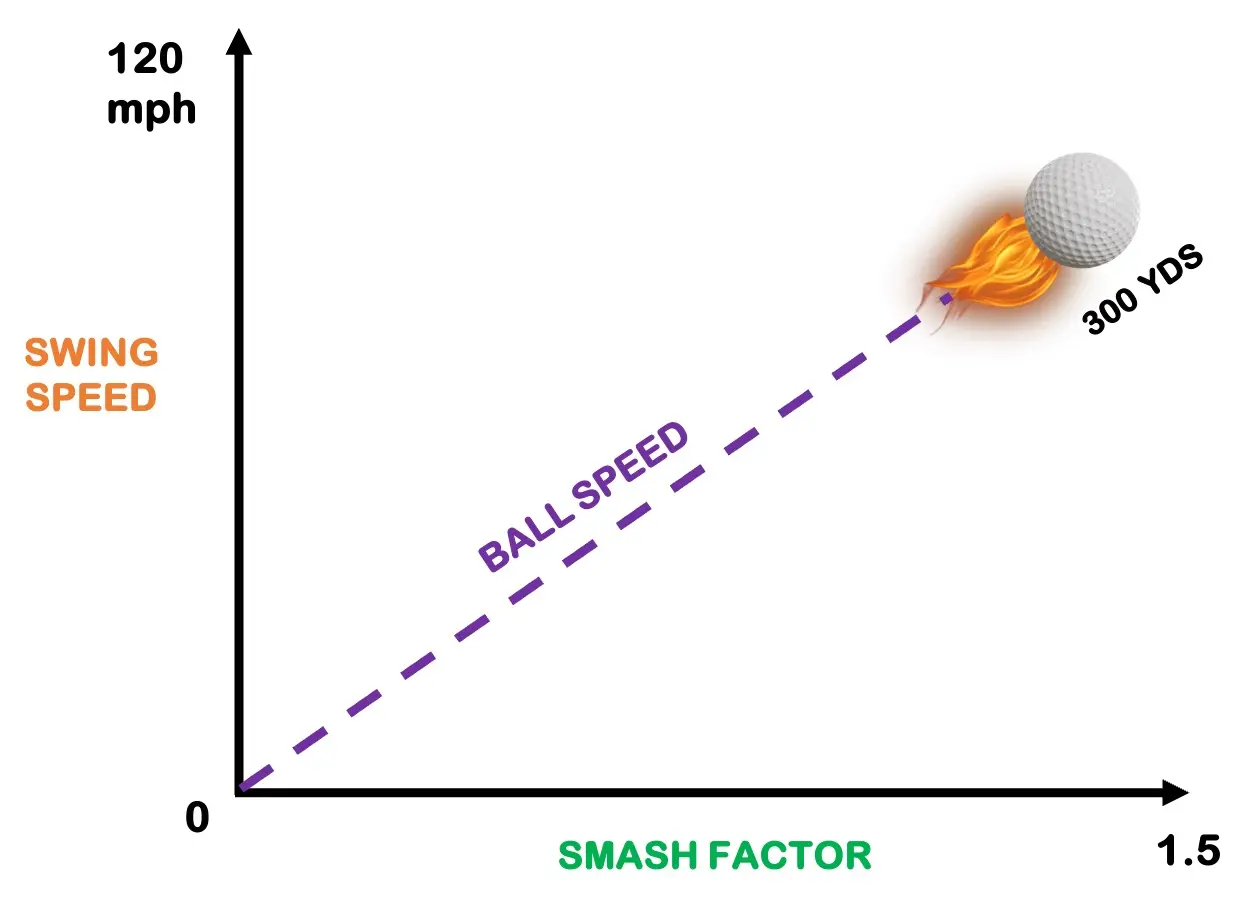
My golf distance charts show the key elements that influence how far you can hit each golf club:
- Swing speed
- Smash factor
- Quality and optimization of equipment
These factors are all heavily influenced by your physiology, skill, age and strength or flexibility levels. Very often, you can optimize each area, with some training or coaching or both.
Golf Club Distance Chart by Swing Speed
Swing speed is a major determining factor the golf club distances. It is not the only factor but if 100 people strike the ball the same, the fastest swings will carry the ball further.
- Most golfers are around 90 mph driver swing speed.
- The average swing speed on the PGA Tour is around 114 mph.
- 150 mph is the top range and only long drive competitors will be swinging toward this range.
NOTE: The swing speed at the top of each column is driver swing speed. We use this as a general gauge to estimate the distance of each club thereafter.
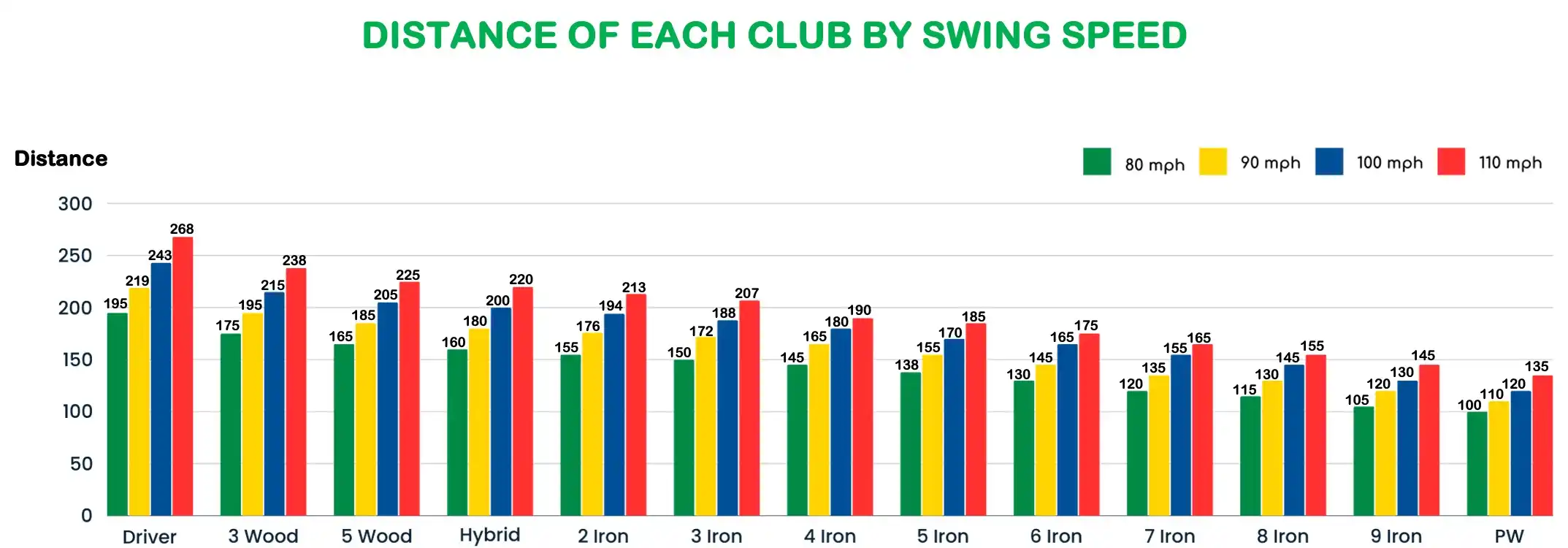
How do I swing the club faster?
You've compared yourself to the numbers in the chart but you want to hit it longer. Almost everyone does and there are 3 ways to swing the club faster:
- Get lessons on proper mechanics with a professional swing coach. They will utilize all your physiological elements and limitations to the maximum, as well as help you hit the ball in the center of the club face. You can add as much as 10 mph to your driver swing speed with correct technique.
- Get stronger and more mobile in the gym. Strength training plus mobility work with a trainer will increase your swing speed guaranteed. You will have a wider range of motion in your muscles and your strength will 100% translate into more speed. You can add 10-20mph to your swing depending on how advanced your strength and mobility currently is.
- Get lighter golf equipment fitted to your swing. Lighter shafts can help increase your swing speed 2-5 mph.
These are the only ways to improve swing speed but the MOST important factor is the coaching and practice so that you can HIT THE SWEET SPOT of the golf club.
The center strike means you send as much energy into the ball as possible and we measure how well you hit the ball using the Smash Factor.
What is Smash Factor ?
Smash Factor is ball speed divided by club speed.
For example: 150 mph ball speed / 100 mph swing speed = 1.50 Smash Factor
The number calculated gives a ratio to show how much energy is moved from the club head to the golf ball at impact.
Low Smash Factor numbers mean less energy is transferred, while higher Smash Factor numbers mean you send more energy from your golf club into the golf ball.
The optimum Smash Factor number for excellent ball striking with the driver is 1.50 Smash Factor.
Ideal Smash Factor for every club
The PGA Tour golfers are the best in the world so we can use their averages to assume the best smash factors in the world. If you can attain these smash factor numbers as stated by Trackman , you are striking the ball as good as you possibly can.
Note how the smash factor decreases as the loft increases.
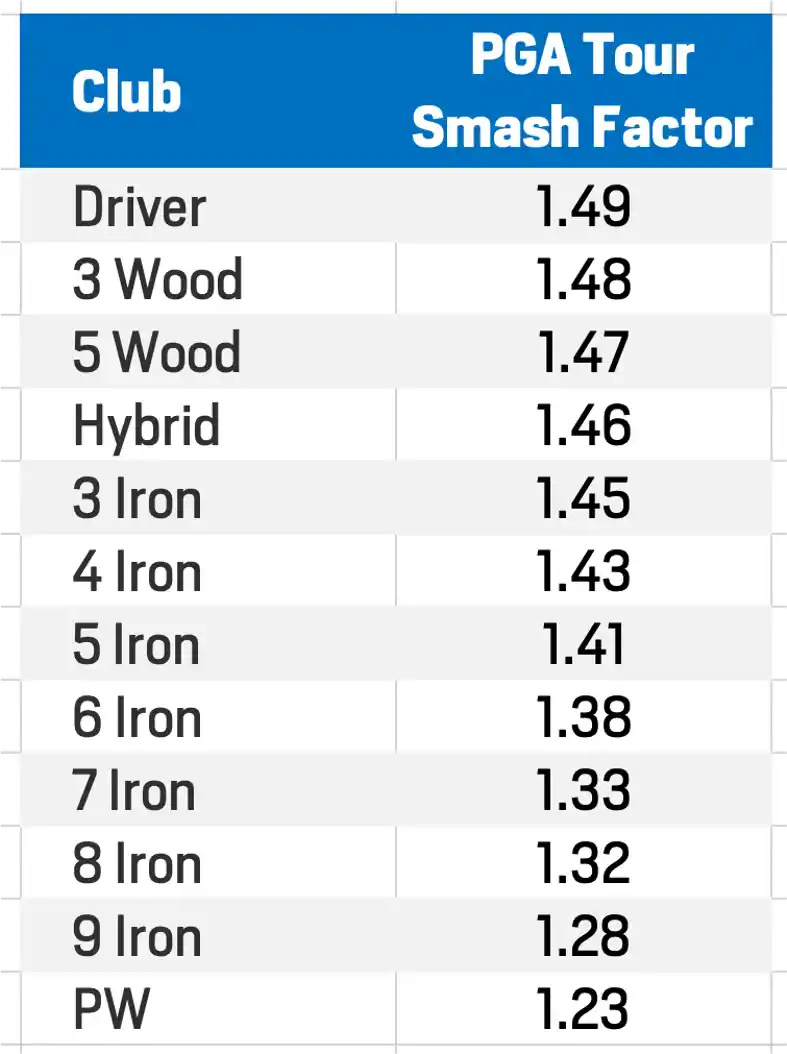
Skill level affects smash factor
Distance is affected by the swing speed but MAINLY the quality of the strike related to that swing speed.
In other words, how close to the center of the club face you hit the ball will determine how your swing speed power is transferred into the golf ball.
If you employ a swing coach, they will assist you in hitting the ball in the middle of the face, or closer to the middle.
That will take your existing swing speed and optimize it by being more efficient with where you hit the ball on the club.
The measurement we use for the quality of your strike is called Smash Factor.
Equipment affects swing speed and smash factor
The pros on tour have optimized equipment to their specific technique and skill level as well as body shape and strength.
The same swing speed in a PGA Tour pro will send the ball much further than an amateur golfer of higher handicap who has a similar swing speed.
The PGA Tour players technique is perfect so if you and a Tour pro hit the ball the same, the pro would still hit the ball further because their equipment has been customized to their exact swing.
A fitting can help to optimize your strength and swing for more distance.
Average Golf Club Distance For Male Golfers By Skill Level
From 'Good Golfer' onward, the 2 iron down to 5 iron should improve as confidence and technique improve, thus bringing more swing speed.
Beginner Golfer: New to the game - first 6-12 months.
Average Golfer: 15-24 handicap .
Good Golfer: 6-14 handicap.
Excellent Golfer: Below 6 handicap.
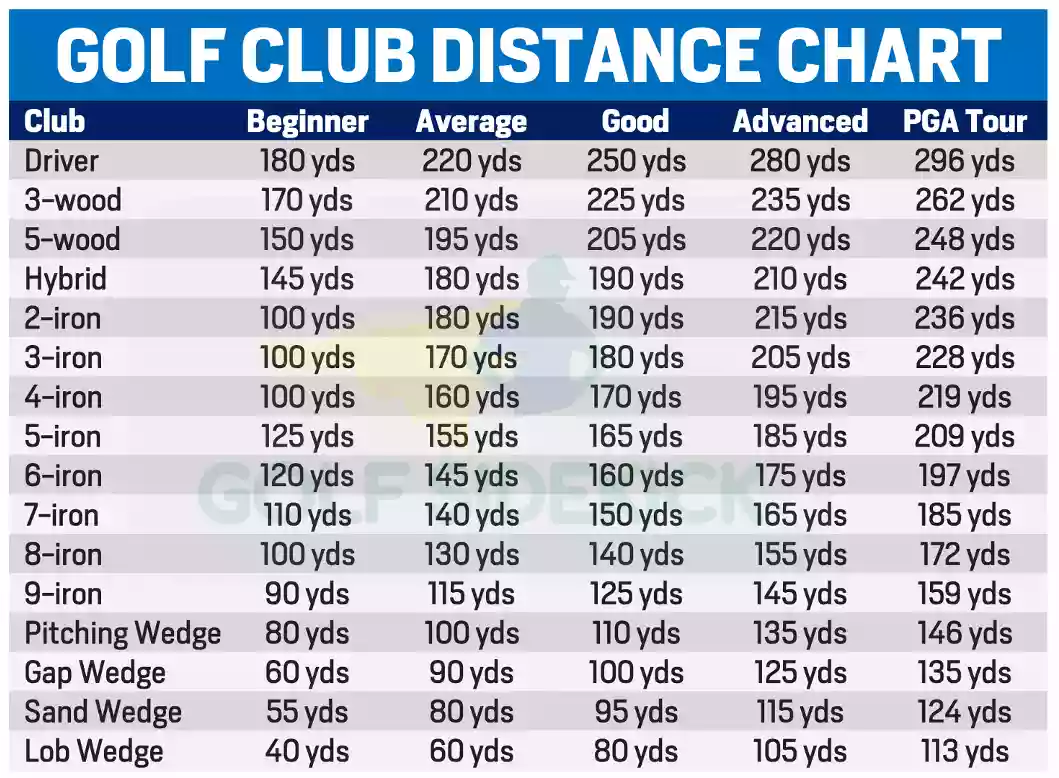
Swing speed charts by age and gender
Swing speed is a vital factor in determining the distance you hit the ball.
The swing speed, with a strike near the middle of the club face makes the ball go further.
A poor strike with high swing speed will go less distance.
A pro golfer swinging at the same speed as an amateur gets wildly different distance numbers because they hit the ball in the center of the face often.
Therefore, if you want to improve your distance with the same swing speed, you can work on improving your strike closer to the middle of the face.
Average swing speed by age and gender chart
In this chart we show the 50th percentile driver swing speed for each gender and age range according to the research done by TPI .
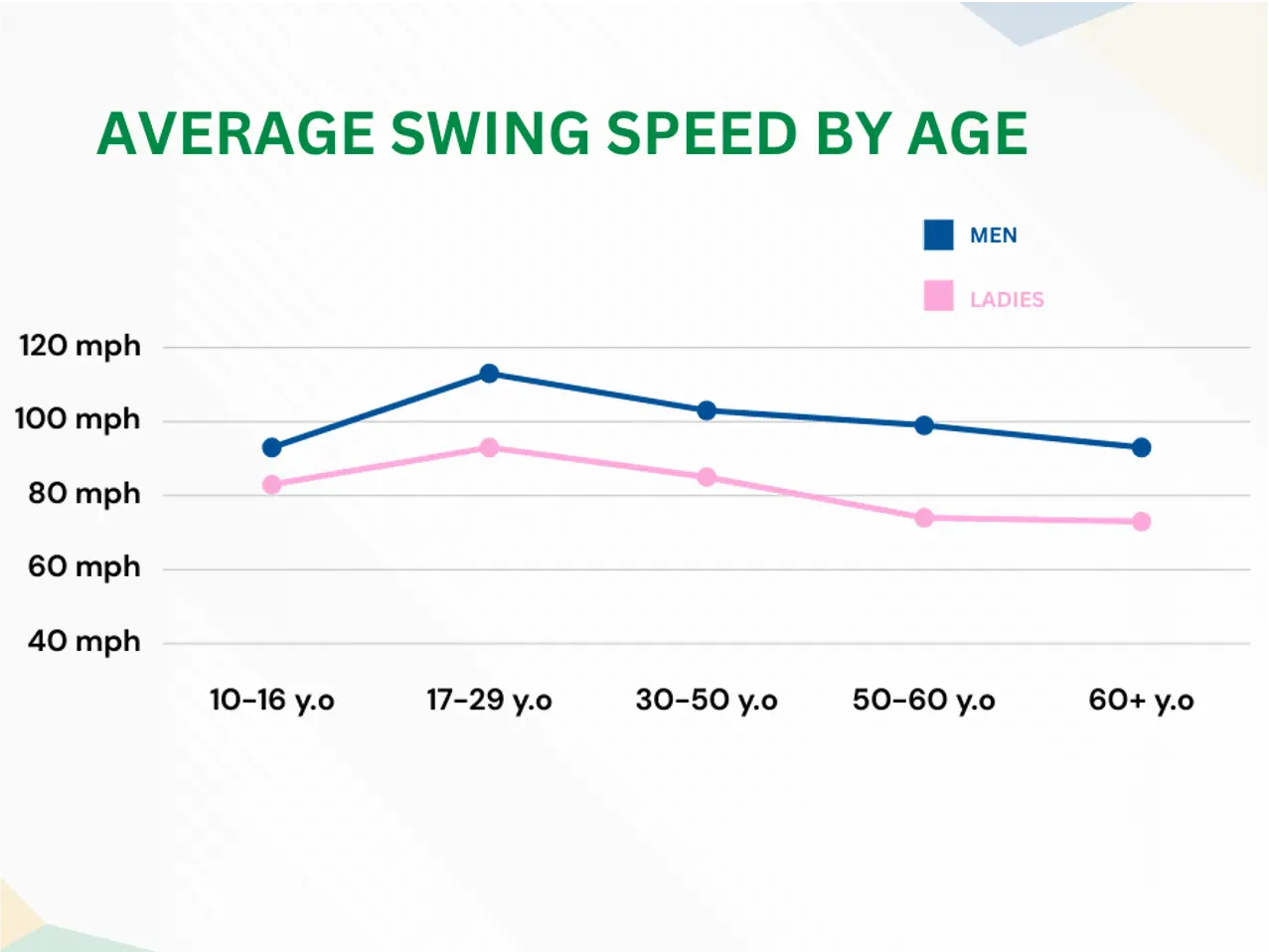
Driver Swing Speed Chart by Golf Skill Level
Confidence and skill make a big difference when hitting the driver efficiently and out the sweet spot.
Beginners with a driver will be more tentative and have less effective mechanics.
Mid handicappers will be more adept at the driver because of experience or lessons.
Advanced golfers swing with confidence from hitting a lot of golf balls and taking lessons with a pro.
PGA Tour golfers have optimized every aspect of the game with the driver and are the very tip of the spear.
Is a 250 yard drive good?
Yes it is very good. According to Arccos and Shotscope , between 15% and 31% of golfers hit 250 yards or more.
Here is a video of me breaking it down.
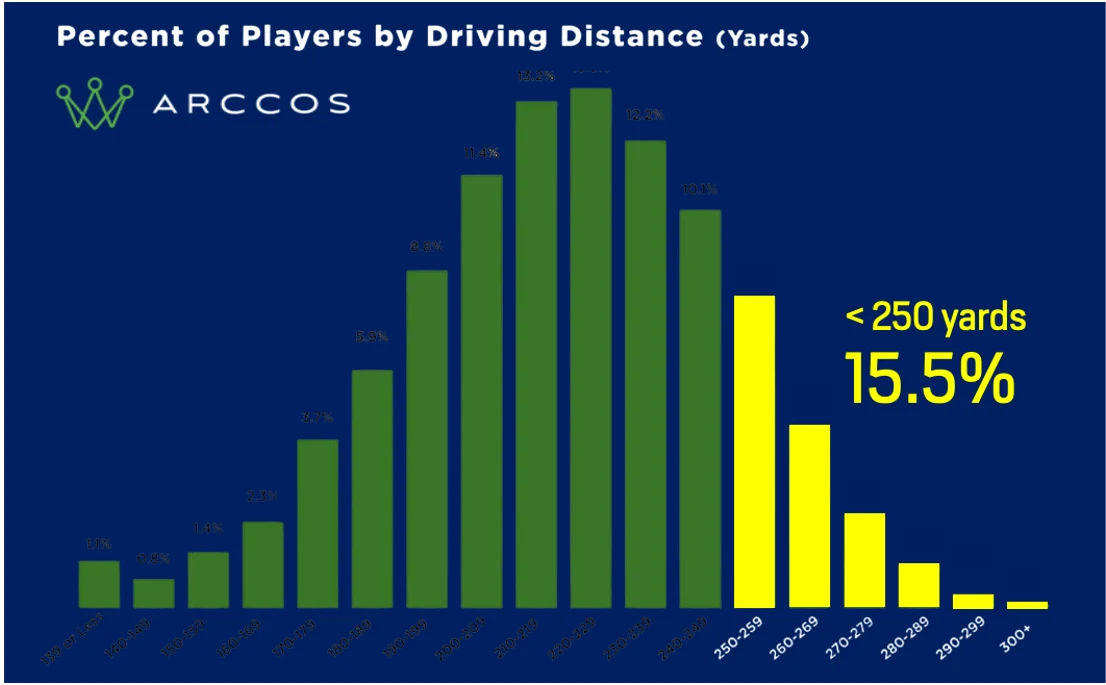
Ball Speed To Club Head Speed Chart for Driver
The ball speed off the driver face is dependent on the strike.
If your strike or Smash Factor is good, you will hit the ball further with your swing speed than the same speed with a bad strike.
Below, we take the club head speed and use a Smash Factor of around 1.42 which is 0.08 away from a perfect strike.
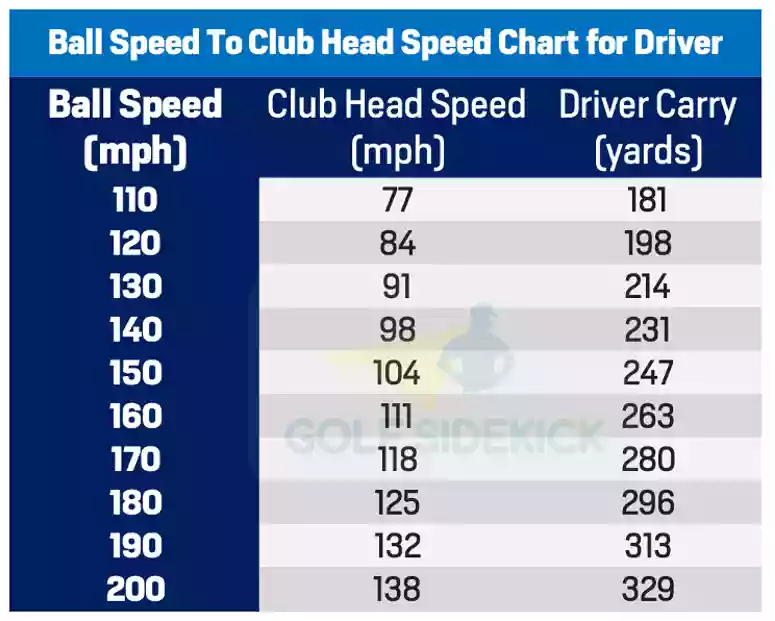
What swing speed hits 250 yard drives?
A swing speed of around 105 mph with the driver, and ball speed of around 150 mph will produce a 250 yard drive.
Ball Speed To Club Head Speed for 7 iron
A 7 iron optimal smash factor is 1.33. That is the PGA Tour average. Remember for the driver it is 1.50
The ball speed off the 7 iron is determined by the swing speed and smash factor.
As the clubs get shorter, the ideal smash factor actually changes.
What distance will you get from a 7 iron at every speed of swing?
What swing speed hits the 7 iron 150 yards?
A swing speed of around 76 mph with the 7 iron, ball speed of around 105 mph and dynamic loft of 21° will produce a 150 yard carry shot.
Golf Club Distance Charts Other Important Factors
Every club has a different loft and more loft goes less distance, while less loft goes longer distance in combination with longer golf shafts.
Driver usually goes furthest while the lob wedge around 60 degrees goes the shortest.
The golf clubs of today go a lot further since the manufacturers started creating cavity back golf clubs in combination with lower lofts for the same clubs.
Every club is between 2 and 5 degrees lower in loft in the current day, which automatically increases distance by up to 15 yards per iron compared to prior times. Driver lofts cannot get much lower as people will not be able to hit them. In order to hit a driver with a loft below 9 degrees, your swing speed needs to be incredibly fast.
An important factor to note for slower swing speeds, is that a higher lofted fairway wood or higher lofted driver can actually GAIN you distance because low lofted clubs are harder to launch at slower swings. Most golfers should be playing fairway woods with a loft that does not go below 16 or 17 degrees .
The club heads are bigger for all golf clubs in modern times with much larger sweet spots. With the addition of lighter shafts in both the irons and the woods, the ball speeds and swing speeds are higher as well. Check out our article on the flex of shafts in the current game.
Golf Club Distance Charts of PGA Tour Golfers
Why are modern golfers longer than prior generations, physical fitness.
Most modern pros are in the gym multiple times per week and in the physio offices often. In prior generations during the Arnold Palmer and Jack Nicklaus days, the pros were regular people who even used to enjoy a smoke and a drink on the course.
Bryson Dechambeau is an example of someone who bulked up in order to hit it further and it made a big difference. The side effects of that can be disputed as he has slimmed down again.
Tiger Woods was one of the first modern day pros to begin working in the gym. His huge transformation to a big, strong guy inspired a whole new generation of golfers and now most up and coming pros are hitting the ball longer than even this generation of pros.
Club advancements
Lofts have changed and the lower lofts in irons will change how far the ball appears to go with the same 'number' iron.
A 7 iron from the 80s may have had 40° of loft while a current 7 iron can have as low as 28° of loft. That 12 degree difference makes a 20-30 yard difference in distance.
The other important factor especially with the woods and drivers, is the materials of the clubs. The drivers now are lightweight titanium and carbon, with graphite shafts, optimized for huge distance.
That alone makes an astonishing difference when we compare to the old persimmon wooden clubs and heavy steel shafts.
The golf ball changed a lot with the release of the Pro V1. Golf balls just went further than ever before.
They spin less, they go straighter and they have advanced to a point that the ruling authorities of golf want to make them go shorter to preserve the golf courses.
If the pros hit the ball too long, they need to extend the golf courses, and there is a lkmited amount fo land available.
The balata golf ball is significantly shorter than the current urethane covered solid core golf balls they use today on the Tour.
You can compare how you shape up against the average golfer, the senior golfer, the pro golfer and the advanced golfer.
The key though is to understand your own game and your distances so you can more effectively plan your game and piece together a good golf score. When you fully understand and accept your distances that you hit the golf ball, you will score better.
For the pros and the advanced players, the distance they hit each club is not a matter of ego. It's a matter of 'which club gets the job done?' and they use that.
You can too, whichever distance you hit it.

Average Golf Club Distances: Amateurs vs PGA Players

The number one key to breaking 100 and golfing better is knowing the average golf club distances you can hit each of your clubs. In this guide, I’ll give a breakdown of average club distances for men and women, amateurs and PGA tour players.
I’ll also touch on other topics like:
- How does swing speed effect golf club distances ?
- How much does the golf ball impact distance?
- How can you increase your distances for each golf club today?
Let’s start by going over the average golf club distances for each club first.
Pitching Wedge
Gap/approach wedge, average male golf club distances, average female golfer club distances, pga & lpga tour club distances, go to the driving range, use a golf gps app, use a launch monitor at home, practice makes perfect, swing speed, club head speed, smash factor, club sweet spot, wind and weather conditions, consistency, improve your swing technique, strengthen your golf muscles, upgrade your equipment, practice, practice, practice, video guides, conclusion/summary, average golf club distances by club type.
The average driving distance for an amateur is 220 yards off the tee . If you can hit further than that regularly and keep your ball in the fairway more often then not, congratulations!
A detailed breakdown on driver distance by golfer type and gender is as follows:
- Average Male: 235 yards
- Average Female: 180 yards
- PGA Golfer: 298 yards
- LPGA Golfer: 247 yards
- Average Range for Men: 200-270 yards
- Average Range for Women: 150-210 yards
The wide average range for both men and women is due to a number of factors, such as:
- Driver Swing Speed
- Driver Technology
- Golf Ball Speed
- Smash Factor / Quality of Strike
- Experience Level
I’ll break all of that down below. But first, I’ll show you the average distances for all of the other golf clubs in your bag.

The 3 wood is the second-longest club in your bag. It can be used off of the tee, fairway, or a propped up lie in the rough. Because of that, the overall average distance you can hit your 3-wood may range.
Golf’s averages are:
- Average Male: 215 yards
- Average Female: 155 yards
- Average PGA Golfer: 278 yards
- Average LPGA Golfer: 230 yards
- Average Range for Men: 180-240 yards
- Average Range for Women: 125-185 yards
The 5 wood has more loft compared to the 3 wood, which makes it easier to hit up into the air but lowers the distance you can get. Average distances for a 5 wood are:
- Average Male: 200 yards
- Average Female: 140 yards
- Average PGA Golfer: 255 yards
- Average LPGA Golfer: 205 yards
- Average Range for Men: 160-225 yards
- Average Range for Women: 110-175 yards
A lot of golf club sets include a 3 hybrid club instead of a 3 iron because it is much easier to hit. The club head on a hybrid is similar to a wood, promoting longer distance and less spin.
Average distances for a 3 hybrid are:
- Average Maler: 190 yards
- Average Female: 130 yards
- Average PGA Golfer: 235 yards
- Average LPGA Golfer: 195 yards
- Average Range for Men: 160-220 yards
- Average Range for Women: 100-170 yards
A 3 iron is used in similar situations as a hybrid, but you will not be able to hit it as far. Instead, you will see a slightly lower ball speed and more spin. A golf ball hit by a 3 iron will not roll as far after it lands.
Average distances for a 3 iron are:
- Average Male: 185 yards
- Average Female: 125 yards
- Average PGA Golfer: 230 yards
- Average LPGA Golfer: 190 yards
- Average Range for Men: 150-210 yards
- Average Range for Women: 100-160 yards
A 4 iron, like a 3 iron, can be tricky to hit because of its low loft and longer shaft length. However, it’s a key medium-to-long distance iron to hit your approach shots with. It’s a common club to use if you need to punch out of the trees or keep your ball flight low and it has a loft of 24 degrees.
The average golf distances for a 4 iron are:
- Average Male: 175 yards
- Average PGA Golfer: 225 yards
- Average LPGA Golfer: 185 yards
- Average Range for Men: 150-200 yards
- Average Range for Women: 90-160 yards
A 5 iron is a very good club that can be hit by pros and beginners alike. It’s often the lowest lofted iron in a beginner set of club.
The average distances for a 5 irons are:
- Average Male: 165 yards
- Average Female: 115 yards
- Average PGA Golfer: 215 yards
- Average LPGA Golfer: 175 yards
- Average Range for Men: 140-180 yards
- Average Range for Women: 80-140 yards
A 6 iron is when ball spin and stopping power become more important than distance. It has a loft of 31 degrees.
The average distances for a 6 iron are:
- Average Male: 155 yards
- Average Female: 105 yards
- Average PGA Golfer: 205 yards
- Average LPGA Golfer: 165 yards
- Average Range for Men: 130-170 yards
- Average Range for Women: 70-130 yards
For most people, a 7 iron is the club where you add enough spin to the golf ball to erase your natural slice or fade. It has a loft of 34 degrees and it’s average distances are:
- Average Male: 145 yards
- Average Female: 95 yards
- Average PGA Golfer: 195 yards
- Average LPGA Golfer: 155 yards
- Average Range for Men: 120-160 yards
- Average Range for Women: 60-120 yards
An 8 iron has about 37 degrees of loft. It is mostly used as a medium-to-short approach club that allows you to get the ball close to the green.
Average distances for an 8 iron are:
- Average Male: 135 yards
- Average Female: 85 yards
- Average PGA Golfer: 185 yards
- Average LPGA Golfer: 145 yards
- Average Range for Men: 110-150 yards
- Average Range for Women: 55-110 yards
A 9 iron is a versatile club that you can use from further away to stick the ball close to the green. It is also a popular chipping club for “bump-and-run” style shots around the green. The 9 iron has a standard loft of 42 degrees.
The average distance for a 9 iron is:
- Average Male: 120 yards
- Average Female: 70 yards
- Average PGA Golfer: 170 yards
- Average LPGA Golfer: 130 yards
- Average Range for Men: 100-140 yards
- Average Range for Women: 50-100 yards
A pitching wedge is used mainly to hit pitches and chip shots around the green. For amateur golfers, the pitching wedge is the highest lofted club that can be hit reliably from all distances. The rest of the wedges in this guide as used as more niche shots at certain distances only.
The average distances for a full swing pitching wedge are:
- Average Male: 110 yards
- Average Female: 65 yards
- Average PGA Golfer: 155 yards
- Average LPGA Golfer: 115 yards
- Average Range for Men: 80-130 yards
- Average Range for Women: 50-85 yards
A gap or approach wedge has more loft than a pitching wedge and is used for high shots with low bounce. The name comes because it is a “gap” club between the pitching wedge and the sand wedge.
The average distances for a full swing gap wedge are:
- Average Male: 90 yards
- Average Female: 55 yards
- Average PGA Golfer: 135 yards
- Average LPGA Golfer: 105 yards
- Average Range for Men: 70-115 yards
- Average Range for Women: 40-80 yards
A sand wedge is used to help you get out of any bunkers you find yourself in. It has about 56 degrees of loft, which is quite a bit. A lot of beginner golfers cannot hit a good sand wedge because the amount of error is so low.
The average distances of a full swing sand wedge is:
- Average Male: 80 yards
- Average Female: 50 yards
- Average PGA Golfer: 125 yards
- Average LPGA Golfer: 100 yards
- Average Range for Men: 60-110 yards
- Average Range for Women: 40-75 yards
A lob wedge is the highest lofted club in a golf bag at 60 degrees. This lob wedge is used to get a huge amount of height but low distance. When hit properly, a lob wedge will produce lots of backspin.
- Average Male: 70 yards
- Average Female: 40 yards
- Average PGA Golfer: 105 yards
- Average LPGA Golfer: 80 yards
- Average Range for Men: 50-90 yards
- Average Range for Women: 35-60 yards
Average Golf Distance Charts
If you want a quick reference guide, the chart below shows how far the average golfer hits the ball for each club.
Using this chart, you can see how your distance for each club matches up against the average golfer.
How Do You Know Your Average Golf Club Distances?
Knowing how far you can hit each golf club is key to both breaking 100 and becoming a scratch golfer. Without knowing how far you hit each club, you are more likely to sail a ball over the green or leave it short for your next shot.
Here are some tips for figuring out your average golf club distances:
Driving ranges are the perfect spot to work on your swing and make everything more consistent. Ranges will have markers for major distance, allowing you to hit dozens of balls and really determine accurate distances for each club.
You don’t hit some irons in your bag that regularly, so the range is the perfect spot to figure out iron distances.
A golf GPS allows you to see the distance to every green and hazard on the golf course while you are playing your round. The good ones also have AutoShot detection, which track your distances on every shot. You can review your stats after the round is done and review average club distances too.
Click here to read about the Garmin Approach watches , which have AutoShot built into them. You can also read about the best golf GPS watches here.

A golf launch monitor tracks metrics about your swing, including:
- Overall distance
- Attack angle
It is the number one way to understand how you hit each golf club while at home. Pick up a launch monitor, such as the affordable FlightScope Mevo , and a golf hitting net , and you will be able to create your own golf club distance charts.

The ultimate way to know your average club distances is to practice. New golfers don’t hit consistent enough to truly understand how far they can hit each club. Working on your skill level first will allow you to get more accurate results.
PGA tour players know their distances because they practice day in and day out.
Click here to check out golf practice tools.
Factors That Impact Golf Club Distance
There are a lot of different components to your swing that affect the average distance you can hit each of your clubs.
Your average swing speed will have a huge impact on how far the ball travels off of your club head. A slower swing speed won’t be able to hit as far as a faster one. The average PGA player can swing about 115 miles per hours, while the average for a casual golfer is only 90 miles per hour. This is a big reason for the difference in average distance at different skill levels.
How fast your club head is travelling at impact with the golf ball determines how far the ball travels. This is correlated to swing speed, but can also be affected by other factors such as:
- Club technology
- Angle of impact
- Wind conditions
Just like swing speed, average golfers have a tough time generating distance with a slow club head speed.
Smash Factor is the ratio between the speed of the ball when it is hit verses your swing speed. If you make direct contact with the golf ball (club head is exactly perpendicular to the ball), you will have a high smash factor and this has a huge impact on distance. If you your club is not direct to the ball, you will introduce side spin to it and you will hook or slice the ball.
It doesn’t matter how fast or hard you are swinging your club if you are not making contact with the club’s sweet spot. A normal iron will have a sweet spot on the bottom-center of the club, which is the ideal spot to make contact. Golf drivers have a bit higher sweet spot because you hit the ball off of a tee.
Making contact with the sweet spot will generate faster ball speed and that satisfying “pop” sound when you make contact.
Distance can be greatly impacted by the conditions on the course. Hitting into the wind will shorten the distance you can get. A side wind will add spin to your golf ball and steer it off path. You will increase your distance if you have a strong wind behind you. A humid day will shorten your shots because of the added air density.
Because of this, the average golf club distances you get are only a guideline. You need to take into account the conditions of the day in order to know the true distance for each shot.
Above everything else, consistency is key. You won’t be able to reliably know your exact distance unless you know that your swing is identical every time.
How Can You Increase Your Golf Club Distance?
If you want to hit the golf ball further, there are a number of things you can do.
Improving your swing technique is perhaps the most effective way to increase your golf club distance. Try these things to practice a more powerful and efficient swing:
- Maintain proper posture : Stand tall with your knees slightly bent and your weight evenly distributed between your feet.
- Grip the club correctly : Hold the club with a firm but relaxed grip, allowing your wrists to hinge during the swing.
- Rotate your body : Focus on rotating your hips, torso, and shoulders in sync, which will generate power and speed in your swing.
- Stay balanced: Keep your weight centered and avoid swaying during the swing.
Click here to read more tips on how to play golf better.
Increasing your strength, particularly in the muscles used during a golf swing, can have a significant impact on your club distance. Incorporate these exercises into your fitness routine:
- Core exercises : Planks, Russian twists, and medicine ball rotations.
- Lower body exercises : Squats, lunges, and deadlifts.
- Upper body exercises : Push-ups, pull-ups, and seated rows.
The right equipment can make a noticeable difference in your golf club distance. Consider upgrading to:
- Custom-fit clubs : Clubs tailored to your body measurements and swing can help you make better contact with the ball.
- Low-compression golf balls : These balls can provide more distance, especially for golfers with slower swing speeds.
- High-quality golf shoes : Shoes with proper support and traction can help you maintain balance and generate more power in your swing.
As with any skill, practice is essential to increasing your golf club distance. Spend time at the driving range working on your swing technique, and consider taking lessons from a golf professional to fine-tune your skills.
With dedication and persistence, you’ll start to see improvements in your distance and overall game.
Want to learn more? Here are some helpful videos on golf club distances that you can watch:
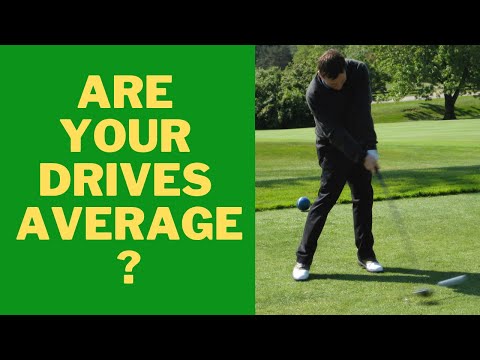
Above, I went over the average golf club distances for each gender and golfer type. This is a guideline to help you determine and compare your own results to. In order to pinpoint how far you can hit each wood, iron, and wedge, you need to practice a lot and work on your swing.
Going to the driving range or buying your own launch monitor is the best way to start to understand your own hitting. If you have any other method that has worked well for you in the past, comment down below and let us know today.
Frequently Asked Questions About Golf Ball Distances (FAQs)
What are the average golf club distances for male amateur golfers.
For male amateur golfers, the average golf club distances tend to vary based on the club used. For example, a driver can reach between 200-230 yards, a 3-wood about 180-210 yards, a 5-iron usually covers 140-160 yards, and a 9-iron approximately 100-120 yards. Remember, these distances can significantly fluctuate depending on factors such as technique, physical strength, and weather conditions.
What is the average golf club distance for a PGA professional male golfer?
PGA professional male golfers tend to achieve significantly longer distances due to their advanced skill level and physical conditioning. Typically, a driver for a PGA pro can reach distances of 280-320 yards, a 3-wood about 240-270 yards, a 5-iron roughly 200-220 yards, and a 9-iron around 150-170 yards. Keep in mind, though, that these distances can vary based on the individual player’s style and environmental factors.

Does golf club type impact the average hitting distance?
Yes, the type of golf club has a substantial impact on the average hitting distance. Each club is designed with a specific purpose and trajectory in mind. Longer clubs like drivers and woods are designed to hit the ball further, while shorter clubs like irons and wedges provide more control and are used for shorter distances. The loft, or angle of the clubface, also plays a crucial role in determining the distance a ball can travel.
How can I increase my average golf club distances?
Improving your average golf club distances requires a blend of factors including improved swing mechanics, increased physical fitness, and often, upgraded equipment. Golf technology is continually evolving, so using up-to-date clubs can also give you an edge.
Does weather affect golf club distances?
Yes, weather plays a significant role in golf club distances. In warmer conditions, the ball can travel further as the air is less dense. Wind direction can also drastically affect your shot distance and trajectory. Understanding these variables and adjusting your game accordingly is a crucial aspect of golf strategy.
Ryan William
With over 25 years hands-on experience in the golfing world, Ryan is not just an avid golfer but a topical authority. His journey has had him delve deep into the nuances of the sport, from mastering the swing to understanding new golf technology. As an entrepreneur, Ryan is at the forefront of the latest golf trends, reviewing all new clubs, accessories, and training aids. His insights and expertise are backed by a prolific writing career, with over 1000 articles published across various platforms. Ryan's commitment is clear: to guide and inform the golf community with unparalleled knowledge and passion.
Last update on 2024-06-07 / Affiliate links / Images from Amazon Product Advertising API
Leave a Comment Cancel reply
Save my name, email, and website in this browser for the next time I comment.
Modern Golf Apparel

Save on TaylorMade, Callaway & more!

Golf Club Distance Charts: Know Your Distances & Lower Your Scores in 2024
Golf club distance charts are invaluable tools for golfers of all skill levels, providing a reliable guide to the average distances achievable with each club under various circumstances.
These charts typically act as a starting point for beginner golfers to understand your hitting power, allowing you to make informed decisions about club selection and course strategy without spending lots of money on tools such as GPS rangefinders or launch monitors while learning the game.
While individual distances are influenced by factors like swing speed, ball flight, and physical capabilities, distance charts equip you with the knowledge and confidence to navigate the course effectively.
In this guide, we’ll cover the importance of understanding your yardarges , reveal the top factors in creating more distance , and provide recommendations on how to create personalized yardage charts .
Table of Contents
The Importance of Knowing Your Distances
Knowing your club distances is essential for accurate shot selection and lowering your score .
Choosing the correct club for the distance ensures you reach the green in regulation, minimizing the need for chip shots and recovery attempts. This means fewer bogeys and doubles , and ultimately leads to lower scores .
For example, imagine facing a 150-yard approach shot:
If you overestimate your distance to the green and choose a 7-iron, you’ll likely leave the ball short of the green. And underestimating the distance using the same club could result in your shot sailing over the green.
The Evolution of Distance Charts
In the past, golfers relied on static distance charts printed in magazines or displayed on scorecards to dial in their yardages.
These provided generalized information , often based on average swing speeds and lacking individual customization.
However, with the advancements of golfing gadgets and technology , the accuracy and accessibility of golf club distance data have reached new heights.
Launch monitors and GPS-powered devices now offer golfers personalized data based on their individual swing speed, launch angle, and ball strike .
This means significantly more accurate distance charts tailored to each player’s unique abilities.
Key Factors Influencing Golf Club Distances
Several factors play a role in finding out how far you hit each club.
By understanding these factors you’ll be able to use distance charts effectively and adjust your expectations on the course.
#1 – Swing Speed
This is arguably the single most significant factor influencing golf club distance.
Higher swing speed generates greater clubhead speed, leading to increased ball speed and ultimately, longer distances .
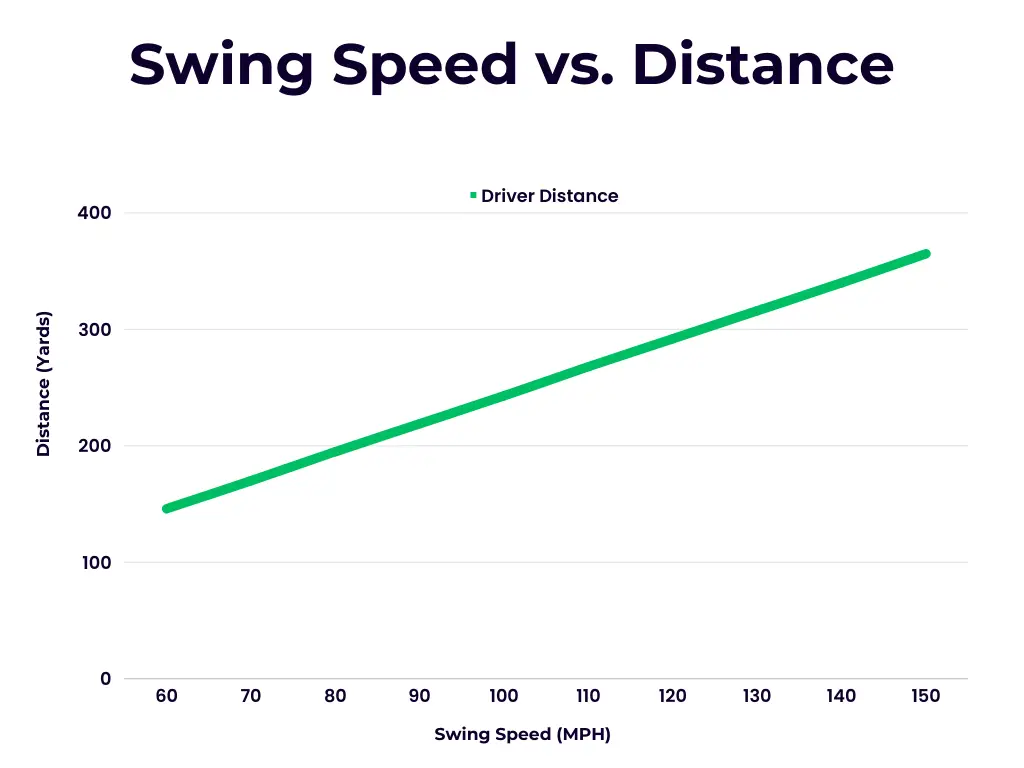
The correlation is direct : a 10 mph increase in swing speed typically translates to a significant distance gain across all clubs.
#2 – Ball Speed
While swing speed is crucial, the actual speed of the ball at launch plays the most direct role in determining distance .
This factor is influenced by both swing speed and the quality of contact with the clubface.
A pure strike in the center of the clubface transfers the maximum amount of energy to the ball, resulting in higher ball speed and greater distance compared to off-center hits.
#3 – Smash Factor
This metric expresses the efficiency of energy transfer from the clubhead to the ball at impact.
It’s calculated by dividing ball speed by clubhead speed.
A smash factor closer to 1.5 indicates a more efficient energy transfer , leading to longer distances.
#4 – Age and Skill Level
As players age and fitness levels decline , swing speeds often decrease, leading to shorter distances .
Conversely, highly skilled golfers typically generate greater swing speeds , resulting in longer average distances compared to beginners.
#5 – Weather Conditions
While external factors like wind, temperature, and altitude play a smaller role compared to the previously mentioned elements, they still necessitate consideration.
Headwinds will shorten your distances , while tailwinds can add extra yards .
Colder temperatures can slightly decrease ball speed, while playing at higher altitudes can lead to longer distances due to thinner air resistance.
Disclaimer: The following charts provide generalized yardages for each club segmented by skill level . It is for informational purposes only and should not be considered a substitute for personalized data . Individual swing speed, launch angle, and smash factor will significantly influence actual distances.
Golf Club Distance Charts
Here are some generalized yardage charts ranging from beginner golfers all the way up to PGA tour level .
Here’s an example of how far you should expect to hit your clubs based on your general skill level.
Beginner Golfer Distance Chart
Beginner’s yardage chart example:.

Average Golfer Distance Chart
Average yardage chart example:.

Lady Golfer Distance Chart
Ladies yardage chart example:.
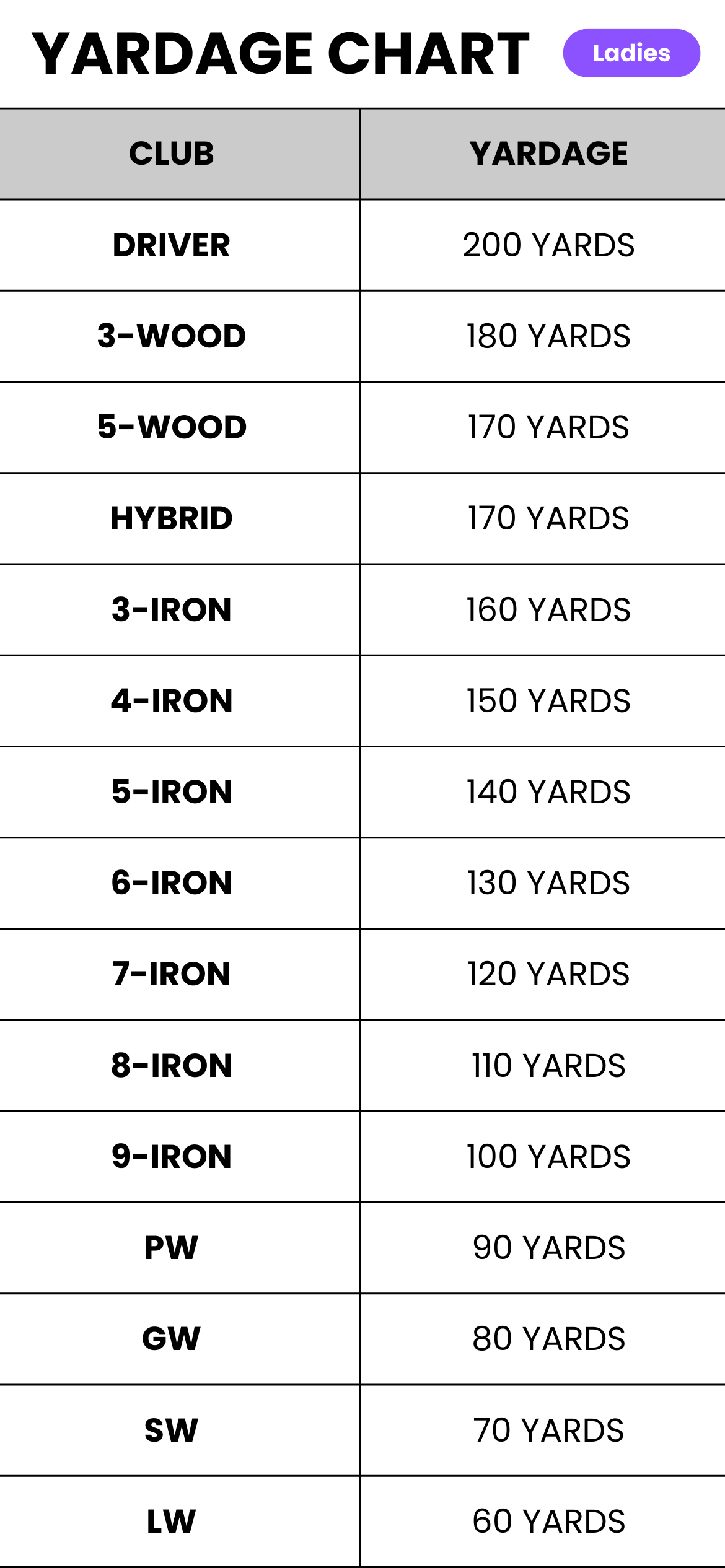
Senior Golfer Distance Chart
Senior’s yardage chart example:.

Using Distance Charts Effectively
Distance charts go beyond simply knowing how far you hit each club.
When you understand how far you hit your clubs consistently, you can significantly enhance your decision-making, and club selection to lower your scores .
Here’s what you can expect to happen when you confidently know your club’s yardage.
#1 – Learn Course Management
Knowing your reliable distances empowers you to make strategic decisions throughout the course.
You can assess risk and reward on every shot, choosing the club that allows you to reach the green in regulation while avoiding hazards or trouble areas.
For example, a well-placed layup with a shorter iron based on your distance chart could be a safer option than attempting a risky long shot over water.
#2 – Get Better At Club Selection
Distance charts eliminate the guesswork from club selection .
By referencing your chart and considering the yardage to the target, you can confidently choose the appropriate club for each shot, minimizing the risk of hitting long or short and leading to more consistent contact and accurate approaches .
#3 – Identify Gaps In Distances
Examining your distance chart can reveal any gaps in your yardage coverage.
These gaps represent distances where you lack a club that comfortably reaches the target.
Identifying these gaps allows you to adjust your club setup or consider adding specific clubs to fill the void and ensure you have a complete yardage arsenal for all situations.
#4 – More Practice and Improvement
Distance charts become valuable tools in your practice routine .
By knowing your exact distances, you can set targeted practice goals based on specific yardages.
This allows you to focus on improving your accuracy and consistency within certain ranges, ultimately leading to better distance control and score reduction .
Create Your Personalized Yardage Chart in 2024
While generalized distance charts can offer a starting point for beginner golfers, relying solely on them can be misleading .
Your individual swing mechanics, launch angles, and even club variations significantly impact your distances. That’s why creating your personalized golf club distance chart is important for accurate shot selection and improved course management .
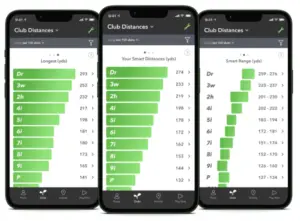
This chart will reflect your unique capabilities , empowering you to make informed decisions on the course .
Here are the top software tools available to help you find the distances of your golf clubs.
#1 – Buy a Launch Monitor

Launch monitors offer the easiest way to create your own distance charts . They track various metrics like clubhead speed, ball speed, launch angle, and spin rate . This data is captured and the yardage chart is automatically created for you . Just set it up on your next range session and hit your clubs! The software will do the rest.
⛳ View Launch Monitors: Best Golf Club Distance Calculators 2024
#2 – Use GPS Devices and Apps

Many GPS devices and apps now track your shots on the course, providing estimated distances for each hit. While not as precise as launch monitors, they offer an accessible and cost-effective way to gather generalized data during play.
⛳ View GPS Devices and Apps: 18 Best Golf Apps of 2024 (Free & Premium)
#3 – Use a Rangefinder Tool
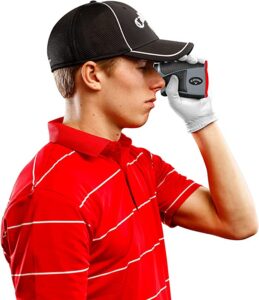
Rangefinders provide accurate yardage measurements to targets via laser on the range and course. This is a more traditional way to understand your yardage for each club. They’re also a must on any golf course. I recommend using a launch monitor for practice and a rangefinder for play.
⛳ View Rangefinders: Top 10 Best Golf Rangefinders for Improved Accuracy and Performance
Golf club distance charts offer a wealth of valuable information for golfers of all skill levels. They provide a starting point for understanding personal hitting power and evolve into powerful tools when customized with your individual data.
Utilizing distance charts effectively can significantly improve your game by:
- Enhancing course management: Making strategic decisions based on reliable distances.
- Simplifying club selection: Choosing the right club with confidence for each shot.
- Identifying gaps in your yardage coverage: Addressing weaknesses and creating a complete arsenal.
- Setting targeted practice goals: Focusing on specific distances for improved accuracy and consistency.
By creating and utilizing your personalized distance chart , you gain a deeper understanding of your game and equip yourself with valuable information to navigate the course strategically and make informed decisions . This translates to improved shot selection, greater consistency, and ultimately, lower scores .
🤔 Glossary Of Yardage Terms
- Swing Speed: The speed of the clubhead at impact.
- Ball Speed: The speed of the ball after impact.
- Smash Factor: The efficiency of energy transfer from club to ball.
- Launch Angle: The angle at which the ball leaves the ground.
- Carry Distance: The distance the ball travels in the air before landing.
- Roll Distance: The distance the ball rolls after landing.
- Layup: A strategic shot aimed at a safe location on the course, often short of the green.
Additional Resources:
- Golf Club Distance By Swing Speed – Downloadable Chart
- Trackman Average PGA Tour Stats
- Trackman Average LPGA Tour Stats
- PGA Tour Stats 2024
- LPGA Statistics 2024
Downloadable Distance Charts:
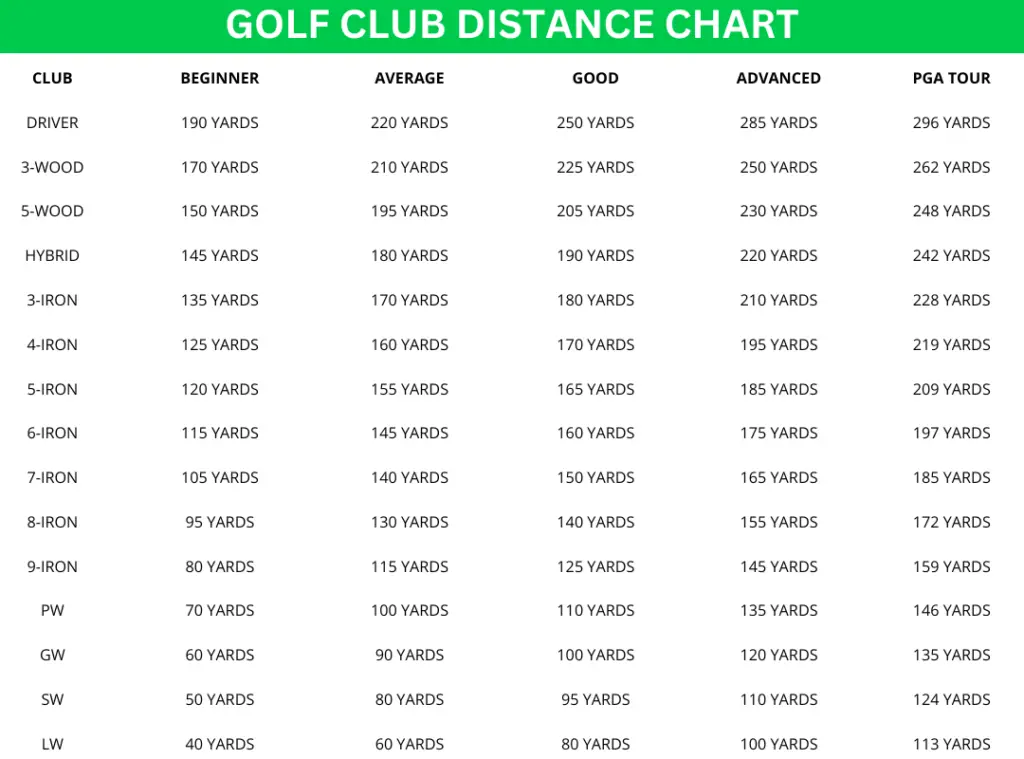
Further Reading:
- 10+ Best Golf Club Distance Calculators: Top Brands & Tech (2024)
- Driver Distance Calculators
- 15+ Best Golf Apps & Golf Games To Try In 2024 (Paid & Free)


Home » New Golf Equipment Reviews » Best Golf Clubs » Average Golf Club Distance (For All Demographics)
Average Golf Club Distance (For All Demographics)
Distance is one of the most commonly talked about things in golf, but we’ve seen that there are many misconceptions about what distance you should hit the golf ball. Many factors contribute to the distances you will experience , with the most significant being swing speed and technique.
In this article, we’ll cover the average distances for beginners , men, women, and PGA tour professionals. We’ll also discuss more in-depth what goes into a golfer’s yardages , and lastly what driving distance you should expect depending on your age.
SUBSCRIBE for FREE GOLF TIPS from our EXPERT INSTRUCTORS!
Golf Club Distance Chart for Beginners
To kick things off, we’ve made a golf club distance chart for beginners , containing most clubs that a beginner usually uses . This chart is made for male golfers, so female beginners may want to take off 10 or more yards from each club for a more accurate result .
Average Distances for Men
The average distance for men is significantly higher than that of beginners. This is because the average golfer has somewhat of a developed technique , increasing their clubhead speed and energy transfer which results in longer golf shots . Here’s a chart to look at to give you an idea of the distances the average male golfer hits:
Average Distances for Women
The average distances for women are noticeably lower than that of the average male golfer. There are many reasons for this, with the biggest reason being that many male golfers are stronger than female golfers, enabling them to swing the club faster and achieve greater clubhead speed, resulting in more distance .
However, many women hit their clubs farther than the average man, which can be seen in the LPGA Tour players. Here, we made a chart of the average distances amateur women can expect from their clubs :
Average Distances for PGA Tour Players
Most golfers know that professionals hit the ball a long way, but with that said, there are significant differences between professional golfers. With the driver as an example, long hitters can average over 320 yards off the tee, while shorter hitters hit their driver around 270 yards .
To get an idea of how far the average PGA Tour professional hits their clubs, you can look at this chart:
Average Golf Drive Distance by Age and Gender
Almost all amateur golfers want to hit their driver longer , but before comparing yourself to professionals, you should look at how long the average golfer of your age and gender hits their drives:
Average Driver Distance for Young Men – 15 to 25
The average driving distance for young men of ages 15 to 25 is between 180-230 yards . The younger ones on the spectrum often hit their driver significantly shorter since they’re not as strong.
Average Driver Distance for Middle-Aged Men – 25 to 50
For middle-aged men between 25 and 50, the average driving distance is between 200-250 yards .
Average Driver Distance for Senior Men – 50 to 70+
The average driving distance for senior male golfers varies a lot , and mainly depends on flexibility, strength, and skill level. The average driving distance for 50 to 70+ year old golfers is between 170-230 yards , with older age decreasing the distance.
Average Driver Distance for Young Women – 15 to 25
Women of ages 15 to 25 will have very varied driving distances, but the average driving distance is between 140-200 yards . This is a wide range, but younger women, often teenagers, have significantly less strength than a 25-year-old woman, resulting in lower ball speed and shorter drives .
Average Driver Distance for Middle-Aged Women – 25 to 50
The average driving distance for female golfers aged 25 to 50 is between 160-200 yards , and once again depending on strength, skill level, and age , with the higher end of the age spectrum often hitting it shorter.
Average Driver Distance for Senior Women – 50 to 80+
For senior women between 50 and 80+ years of age, the average driving distance is between 125-175 yards , with the older you get typically meaning the shorter you hit your driver.
Conclusion:
All golfers hit their clubs very different distances, since there are so many things in the golf swing impacting the club’s yardage . In this article, we’ve covered the golf club distances you can expect from a wide range of golfers, including beginners, ladies, men, and professionals. However, it’s crucial to remember that all of these numbers are simply averages, and what you will experience is highly personal . Thank you for reading this article from TellMeMoreGolf.com.

Patrick Corley
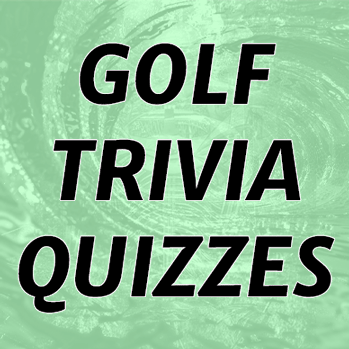
Affiliate Disclaimer
TellMeMoreGolf.com is a participant in the Amazon Services LLC Associates Program, an affiliate advertising program designed to provide a means for sites to earn advertising fees by advertising and linking to Amazon.com.
Popular Articles
- Increase Swing Speed
- Vintage Golf Club Value
- Irons for Mid-Handicap
- Golf Shoe Reviews
- Comparing Woods
4640 Admiralty Way Ste 302 Marina Del Rey, CA 90292 Tel. (424) 405-6472
Useful Links
Privacy policy, golf hardware.
GET FREE GOLF TIPS FROM OUR EXPERT INSTRUCTORS!

Golf Club Distance Chart
This post may contain affiliate links. As an Amazon Associate I earn from qualifying purchases.
This golf club distance chart will help provide you with a guide to how far you should hit your golf clubs. You’ll also be able to tell what level you’re at compared to the pros and how increasing your swing speed will impact your yardage.
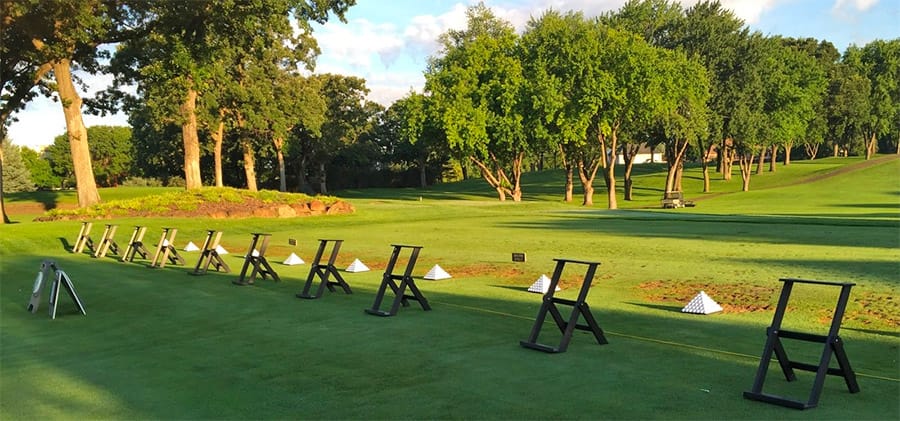
Table of Contents
Golf Club Distance Chart by Swing Speed
This table from Trackman shows the average distance for golf clubs based on the swing speed of a driver. Of course, your distances will vary based on how well you’re striking the ball, but this cheat sheet should give you a good idea of how far you can expect your clubs to go when hit well.
Note that these are carry numbers. So you might expect from 0-10 yards of extra distance depending on the club, how it’s struck, and where it lands.
Printable Golf Club Distance Chart
If you’d like to print this chart out, click on the image below or download this golf club distance chart pdf .
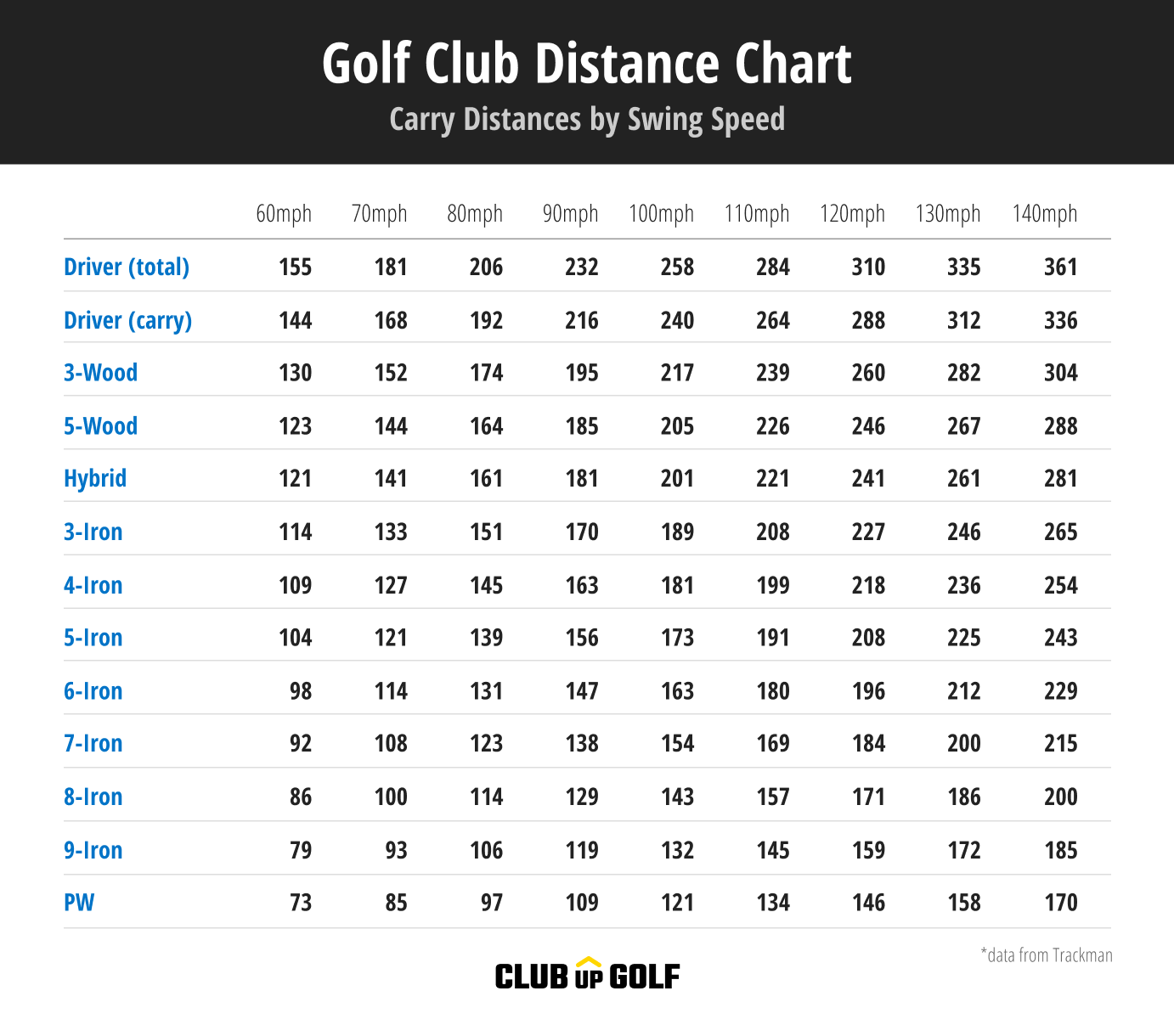
Average Swing Speed by Player Type
Here are the average swing speeds by type of player. These numbers vary widely, especially among amateurs, but they can give you an idea of where you stand among your peers.
Average Swing Speed by Handicap
The distance you can hit your clubs directly correlates with your potential handicap. Of course, your actual handicap number will vary based on all the factors of your game, but these are the expected averages for males and females.
Average Driver Distance by Age
The table below shows the average driving distance by age. Your actual numbers will vary based on your fitness and skill. As people age, they tend to lose fast twitch muscle fiber and flexibility unless they’re actively working to maintain them.
How to Find Your Driver Swing Speed
There are several ways to find your swing speed to place yourself on this chart.
The simplest way is to get the yardage for one of your clubs, such as the driver, and match that yardage to the chart. You should find one of the columns closely matches your yardages. Ensure you’re tracking average yardage and not your best drive to get accurate numbers.
Here are several other ways:
- Use a golf simulator to get an accurate swing speed number. A device like a Trackman or a Skytrak should be able to provide you with this data. If you don’t have a simulator, you may be able to find somewhere nearby where you can rent time in a simulator bay.
- Use a launch monitor like the PRGR (around $200), which accurately measures speed.
How to Make Your Own Club Distance Card
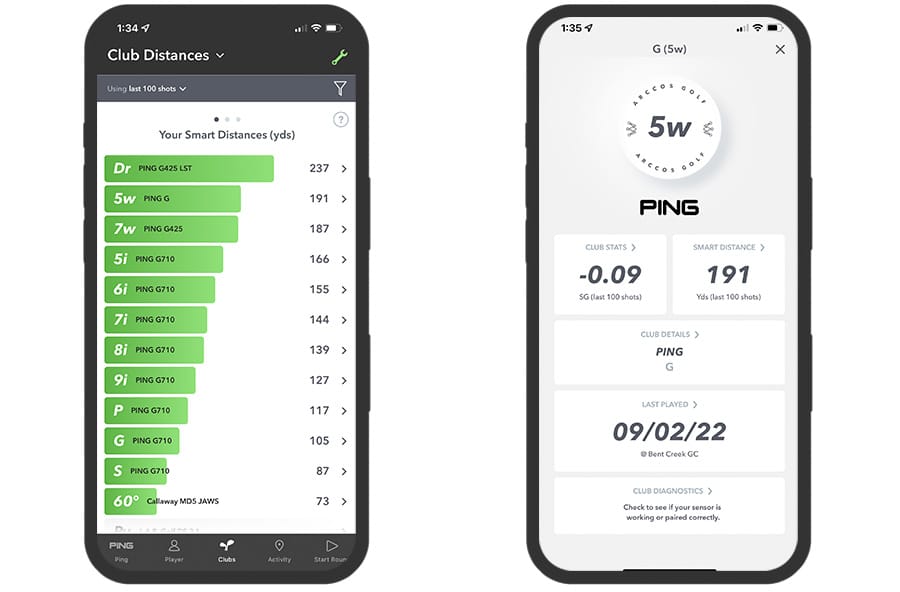
To make your own club distance card, you’ll need to start by measuring each club’s carry and/or total distance. There are several ways to get this data:
- A golf simulator (you can rent simulator time if you don’t have access)
- A launch monitor (such as the PRGR mentioned above)
- A golf tracker (such as the Arccos Caddie )
- A range finder and some time at the driving range (this approach is less precise and takes extra effort)
Choose which data is most helpful. For example, carry distances are useful for hitting a green or ensuring you can get over trouble, and the total distance helps you know your range. You can also track distances for partial swings (like a 1/4, 1/2, or 3/4 wedge).
After you’ve gathered all the numbers, there are several ways you can use them to make your club choices easier on the course:
- Paper – the most basic way is to write them down on some note paper; you can use the templates below for an idea of what to write down.
- Phone – you can save these numbers as a note or document for reference if your phone is easily accessible during your golf round. Apps like the Arccos Caddie (mentioned above) will also track this for you.
- Print Out – we’ve included some sample templates below to give you ideas on how to design a card.
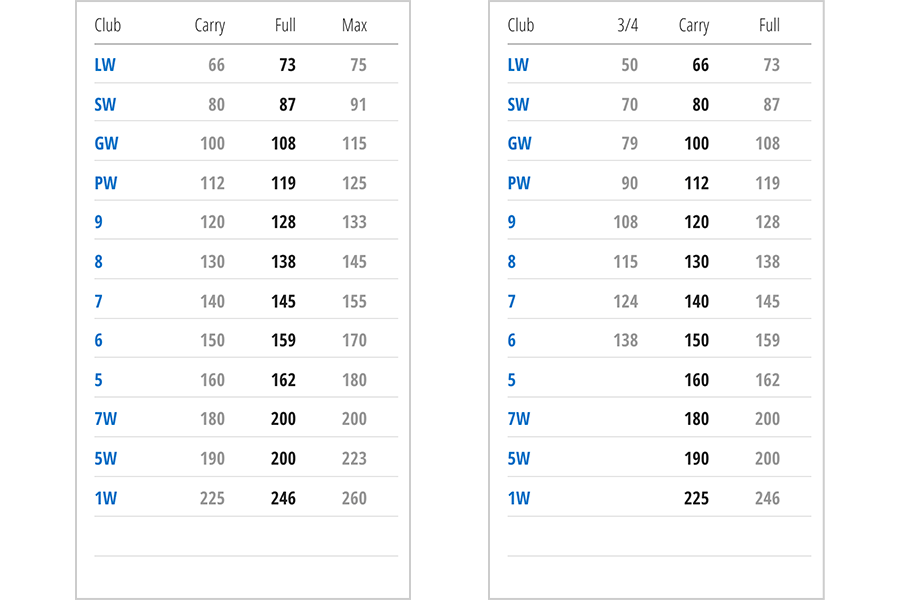
Once you have your distance card, you can laminate and carry it, put it in a scorecard holder, attach it to your bag with a bag tag holder , or tape it to your push cart.
You should expect to hit a 7-iron between 130 and 160 yards. Each iron should vary by about 8 to 10 yards (e.g., if your 7 goes 150, your 8 should go around 140). This will change depending on your swing speed, which is related to your technique, flexibility, fitness, and height.
An average male swings the driver at 94 mph, traveling around 240 yards. However, most amateurs don’t hit the ball perfectly, so this will often fall short of this potential yardage when mishit. A PGA Tour player hits the driver an average of 295 yards (some are much longer, like DeChambeau at 320 yds). An LPGA player drives the ball around 240 yards in total.
In 2021 Kyle Berkshire hit a ball speed of 233.4 mph with a swing speed of 153.3 mph. His swing speeds have been slightly higher, but ball speed ultimately factors most into the distance.
- https://blog.trackmangolf.com/club-speed/
- https://blog.trackmangolf.com/trackman-average-tour-stats/
Share this post
Kyle J. Larson
Comments cancel reply.
Your email address will not be published. Required fields are marked *
Same my info for the next time I comment.
JOHN T. HARTMANN
Last check, my golf swing speed has been around 98 to 100mph. So as a reference I hit my 7-Iron about 165yds on average, pitching wedge would be 130 to 140yds and driver 230 to 260yds depending upon contact and degree of flight. I can handle tee spots up to 6700 to 6800yds. However, my wife thinks I should “play-up” because my scores are “mid 90’s on challenging course, but my issues have always been the short game, not distance. What do you suggest?
Regarding John Hartmann’s comment….play the tees where you have the most fun. If all your buddies are playing from the same tees as you maybe you want to just keep playing those same tees with your friends. Most of us are just playing for fun. Play where you have the most fun but if I were you I’d at least give it a try moving up. 6800 yards is a lot of golf course for weekend golfers. Who knows, you might have more fun making lower scores from closer tees.
Yeah, play whichever tees you like, but like SS said 6800 is probably a lot if you’re not hitting a driver at least 260+… if you take a look at the par 3 distances, and shots you may have to hit into greens on a 2nd or third shot (after subtracting your avg driver distance) it’ll help you figure out what to play. I’m going to have a lot more fun hitting irons into a green and having some birdie chances then if I’m always trying to crank a fairway wood in and missing or having long putts.
I’m 80 years old and hit my driver pretty consistently 200-210. Since moving to the up tees I have had so much more fun. Now it’s driver and a medium iron rather than driver, fairway wood, pitching wedge. Having a chance to make some birdies makes all the difference in enjoyment for me.
The Memorial presented by Workday
Muirfield Village Golf Club
Golf Digest Logo Tee it forward
What is the best course yardage for you? New tour data reveals a stark answer
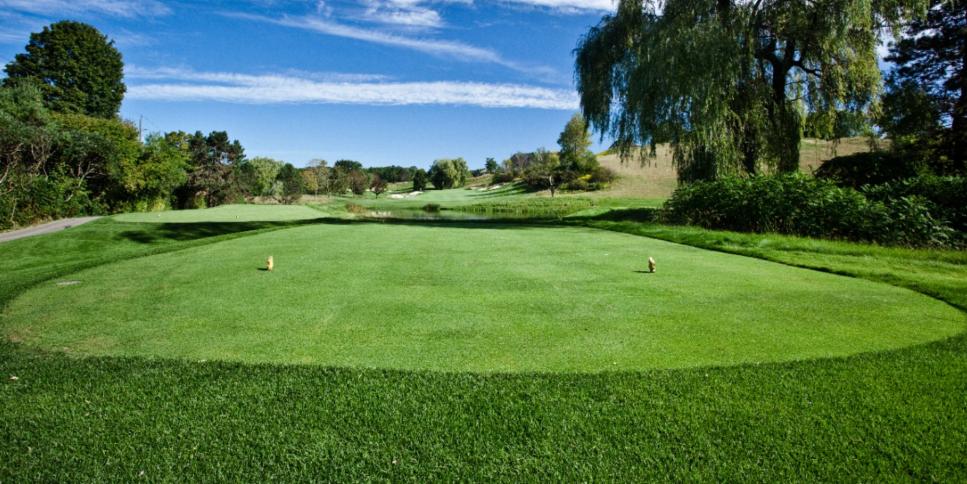
Joseph Gareri
Proponents of the golf ball rollback argue that professional golfers hit the ball too far, causing the game to place too much emphasis on distance and rendering classic designs defenseless. Those who oppose a universal rollback— which will take effect for pros in 2028 and for everybody else in 2030 —believe that the move will rob average golfers of much needed distance, as most courses are already too long for them.
Could both sides be right? We crunched some numbers to contextualize just how short courses play for pros and how long they play for the rest of us. The results are astounding and can be taken two ways: Either tour pros need to play much longer courses or we need to move up a set of tees . . . or three.
Last year on the PGA Tour, the average course was a shade under 7,300 yards and the average driving distance was about 300 yards. Rory McIlroy led the tour in driving distance, averaging 326 yards per drive. Most of us will never be able to hit it 330 yards, but we can play an appropriate tee box that would make a course feel as it does for Rory.
More From Golf Digest

Measuring driving distance as a percentage of total yardage
Time for a little math. McIlroy’s 326-yard average is 4.473 percent of the length of an average tour course. So, for us to play a course that feels like a normal tour course does for Rory, our average driving distance should be 4.473 percent of the total yardage.
Before we crunch the numbers, you need to determine your average driving distance. Be honest with yourself. This isn’t a measure of how far your best drives go, but the good and the bad together. Keep in mind these statistics, taken from our How You Compare interactive , where you’ll see the average driving distance for each handicap. (The tour data in the interactive was taken from 2022, when Cameron Champ led the tour in distance.)
OK, let’s start with the bombers amongst us—those who average 270 yards, or nearly 10 yards more than the average scratch golfer. For those players to make a course feel like it does for Rory, they would need to play from … 6,036 yards.
If that sounds incredibly short, it is. Those longest players are likely used to playing the tips, anywhere from 6,500-7,000 yards. For those who average 250 yards off the tee, you’d need to play from 5,589 yards for a course to feel like it does for Rory. Check out the complete breakdown below.
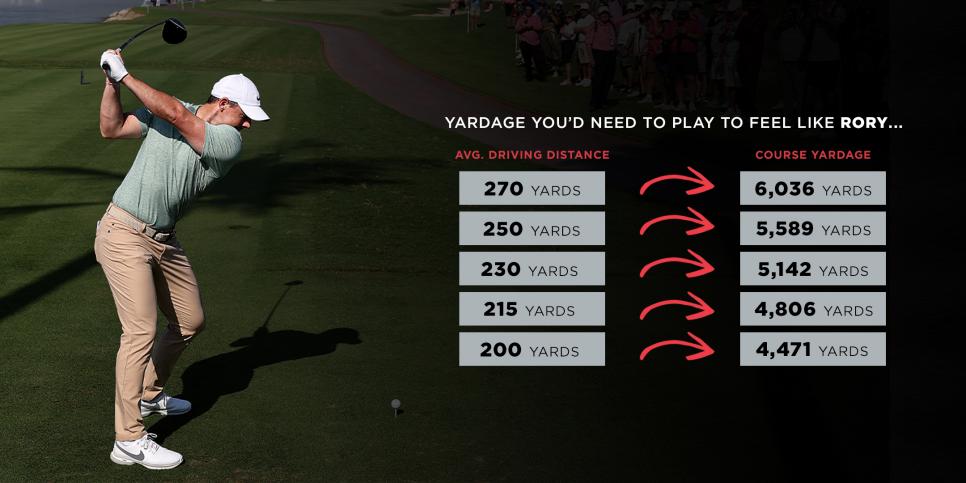
Either our second shots are too long . . .
Keep in mind that the average driving distance for a 15 handicap is just under 220 yards. That’s roughly the average for all male golfers. For those players to play a course the way Rory does, they would need to play from around 5,000 yards.
That is extraordinary, considering data from the USGA finds that the male golfers, on average, play from 6,089 yards. To play golf like a tour bomber, you don’t need to move one tee box up, you need to move three. The shortest tee box at most courses is just under 5,000 yards, so if you really want to see how Rory plays, you should be playing from the forward-most markers.
To be fair, as the longest player on tour, Rory is a bit of an anomaly, so we also ran the numbers for how far you’d need to play from to feel like an average tour player. Considering the average driving distance on tour is about 300 yards, that’s 4.111 percent of the average tour course yardage. So to feel like a typical tour player, your driving distance should be 4.111 percent of the course yardage. Here’s how that shakes out for various driving distances.
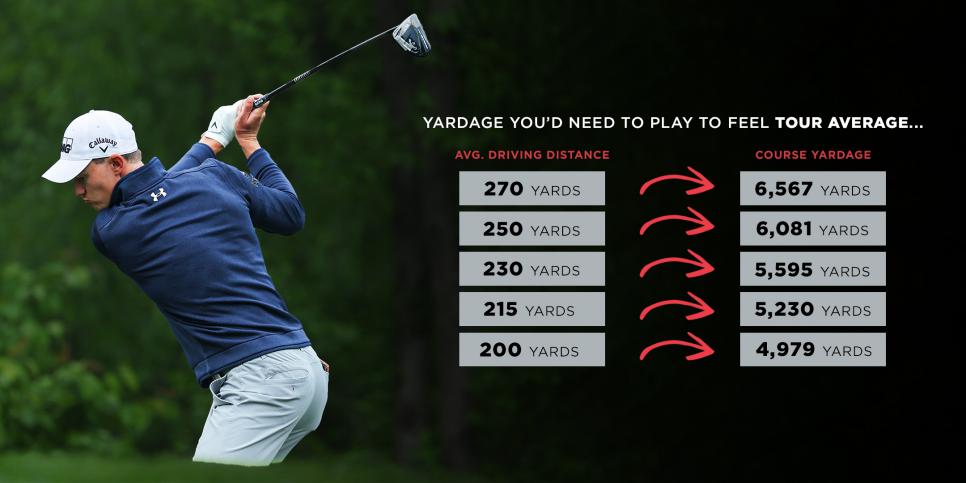
Or tour players' second shots are too short
Let’s flip this scenario around. Maybe it’s not that we’re playing courses that are too long, but tour players are playing courses that are far too short. Remember we said the average male golfer plays from about 6,100 yards. When a golfer who averages 230 off the tee plays a course that is 6,100 yards long, that’s the equivalent of Rory playing a course that is … 8,654 yards. Move on back, Rory, and see what we’re dealing with. Here’s how the rest of those numbers play out.
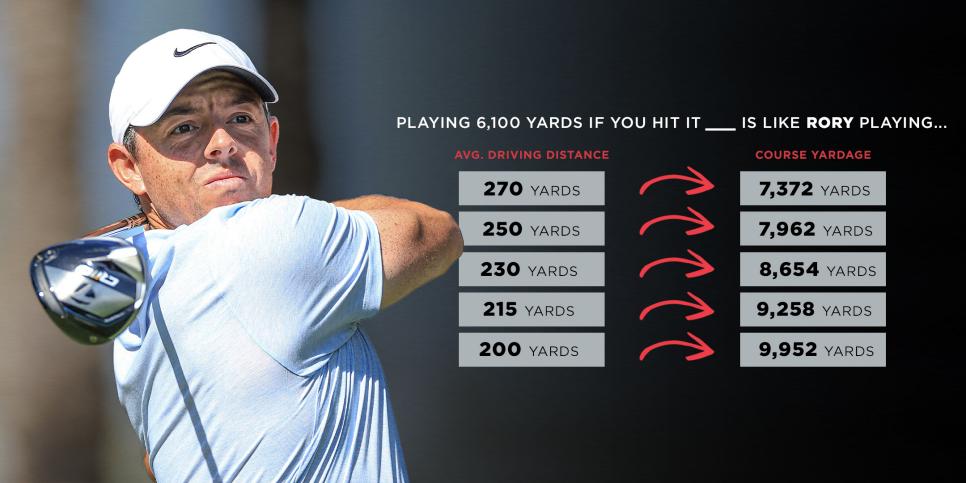
If you’re coming into greens with long irons and hybrids all day and wondering how tour pros go driver-wedge on many holes, it’s not only because they’re hitting it far; they’re playing from drastically shorter tee boxes than you probably are, compared to their driving distance. How often does the weekend player who hits it 230 play from 5,600 yards?
What all of these numbers tell us is that there is a massive disconnect between the professional game and the golf that we’re playing. To bring these two closer together, the choice is either to make courses much longer for pros or much shorter for the average player. The latter is easy—we just move up a few tee boxes. But stretching a tour course out to 8,654 yards is obviously not practical.
Hence, the ball rollback, which seeks to reign in the distance that the longest players hit it, while having little effect on the average player. We will see how it plays out, but in the meantime the numbers are clear: Move up a tee box!
(If you’re curious, we also ran the numbers on playing a course that is 6,500 yards. When someone who averages 215 yards plays a course that is 6,500 yards, that is like Rory playing a course nearly 10,000 yards. Check out the rest of the numbers.)
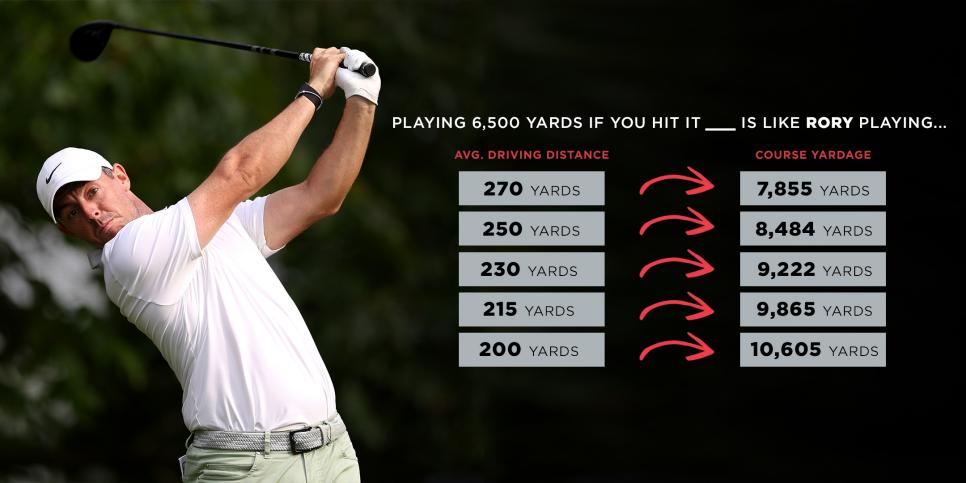
More from Golf Digest
Trending now.
- SI SWIMSUIT
- SI SPORTSBOOK
TV Times: How to Watch the Memorial Tournament, LIV Golf Houston, LPGA in New Jersey
John schwarb | jun 4, 2024.
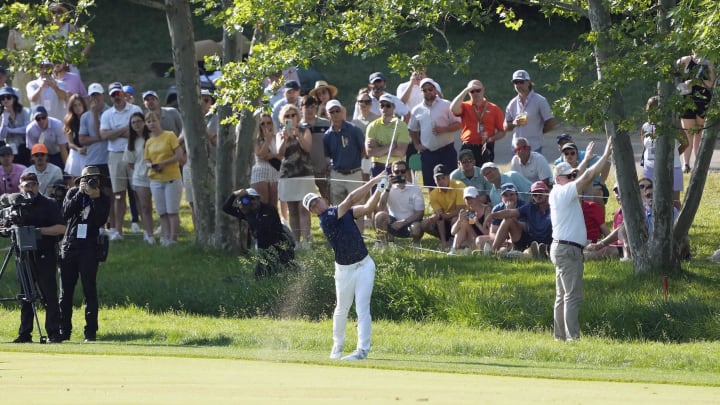
PGA Tour: Memorial Tournament
Site: Dublin, Ohio.
Course: Muirfield Village GC. Yardage: 7,571. Par: 72.
Field size: 73 players .
Prize money: $20 million. Winner’s share: $4 million.
Television: Thursday-Friday, 2-6 p.m. (Golf Channel); Saturday-Sunday, 12:30-2:30 p.m. (Golf Channel), 2:30-6 p.m. (CBS).
Defending champion: Viktor Hovland.
FedEx Cup leader: Scottie Scheffler.
Last week: Robert MacIntyre won the RBC Canadian Open.
Notes: The Memorial has moved dates as a signature event, now being held the week before the U.S. Open. This starts a three-week stretch of two signatures events sandwiched around the U.S. Open at Pinehurst No. 2. ... Robert MacIntyre chose to withdraw and go home to Scotland after his Canadian Open victory. ... The Memorial honorees this year are Juli Inkster and the late Tom Weiskopf. ... Auburn freshman Jackson Koivun, who swept all the awards as the college player of the year, is playing on a special sponsor exemption. ... The four regular exemptions went to Billy Horschel, Brandt Snedeker, Matt Kuchar and Alex Noren, none on the PGA Tour policy board. Kuchar and Horschel are past Memorial champions. ... Xander Schauffele is playing for the first time since winning the PGA Championship at Valhalla for his first major. ... MacIntyre was the eighth first-time winner on the PGA Tour this year.
GCSAA Fact Sheet: Click here .
Next week: U.S. Open.
LPGA Tour: ShopRite LPGA Classic
Site: Galloway, New Jersey.
Course: Seaview Resort (Bay Course). Yardage: 6,190. Par: 71.
Prize money: $1.75 million. Winner’s share: $262,500.
Television: Friday, noon to 2 p.m. (Golf Channel); Saturday-Sunday, 5-7 p.m. (Golf Channel).
Defending champion: Ashleigh Buhai.
Race to CME Globe leader: Nelly Korda.
Last week: Yuka Saso won the U.S. Women’s Open.
Notes: U.S. Women’s Open champion Yuka Saso is in the field. Her only two LPGA titles are the Women’s Open at Olympic Club in 2021 and Lancaster in 2024. ... Se Ri Pak (1998) and In Gee Chun (2015) are the other players whose first two official LPGA wins were majors. ... Karrie Webb is in the field under a Hall of Fame exemption. She last played on the LPGA Tour at the ShopRite Classic last year, missing the cut. She turns 50 in December. ... One of the sponsor exemptions when to Gianna Clemente. She Monday qualified for three straight LPGA events in 2022 when she was 14. ... Saso moved all the way to No. 6 in the women’s world ranking, all but securing a return to the Olympics. She competed for the Philippines in 2021. ... Last week was the first time Japanese players finished 1-2 in a major. Hinako Shibuno was runner-up and is playing this week at the ShopRite.
Next week: Meijer LPGA Classic.
LIV Golf League: LIV Golf Houston
Site: Houston.
Course: Golf Club of Houston. Yards: 6,789. Par: 72.
Television: Friday, 1-6 p.m. (CW app); Saturday-Sunday, 1-6 p.m. (CW Network).
Defending champion: New event.
Points leader: Joaquin Niemann.
Last event: Brooks Koepka won LIV Golf Singapore.
Notes: This is the first time LIV Golf is playing in Texas. It returns at the end of the season for its team championship outside Dallas. ... The Houston Open was played at the Golf Club of Houston from 2003 through 2019. LIV players who won the Houston Open there are Ian Poulter, Matt Jones, Phil Mickelson, Paul Casey and Anthony Kim. ... Bryson DeChambeau plays for the first time since his runner-up finish at the PGA Championship. ... Twelve players from LIV have qualified or are exempt to the U.S. Open next week. ... Jon Rahm has not won since signing up with LIV Golf last December. He is the only player to have finished in the top 10 at all seven LIV events this season. ... DeChambeau (twice), Cameron Smith and Tyrrell Hatton are the only LIV players to register top 10s in the two majors this year.
Next event: LIV Golf Nashville on June 21-23.
DP World Tour and Ladies European Tour: Volvo Car Scandinavian Mixed
Site: Helsingborg, Sweden.
Course: Vasatorps Golfklubb. Yardage: 7,295 (men), 5,772 (women). Par: 72.
Prize money: $2 million. Winner’s share: $333,333.
Television: Thursday-Friday, 7 a.m. to noon (Golf Channel); Saturday-Sunday, 7:30 a.m. to noon (Golf Channel).
Defending champion: Dale Whitnell.
Race to Dubai leader: Rory McIlroy.
Last week: Laurie Canter won the European Open.
Notes: The tournament features 78 players from each tour competing on the same course at the same time for equal prize money and one trophy. The women play from a set of tees that are roughly 1,500 yards shorter. ... Among the past champions is Linn Grant, who is the only woman to be able to claim a European tour title. This version of the tournament is in its fourth year. ... Jorge Campillo and Adrian Otaegui are in the field as they continue to chase the second spot for Spain in the Olympics. ... Grant and Madelene Sagstrom are among the leading LET players in the field. ... Seve Ballesteros won on this course in 1978. ... This is the fourth course in Sweden used for the Scandinavian Mixed in its four years. ... Dale Whitnell won last year for his first European tour title after 14 years and 106 starts on the circuit.
Next week on DP World Tour: U.S. Open.
Next week on Ladies European Tour: Ladies Italian Open.
PGA Tour Champions: American Family Insurance Championship
Site: Madison, Wisconsin.
Course: University Ridge GC. Yardage: 7,083. Par: 72.
Prize money: $2.4 million.
Television: Friday, 7-9 p.m. (Golf Channel-tape delay); Saturday-Sunday, 2:30-5 p.m. (Golf Channel).
Defending champion: Steve Stricker.
Charles Schwab Cup leader: Steven Alker.
Last week: Ernie Els won the Principal Charity Classic.
Notes: Steve Stricker is the tournament host and the defending champion, one of his six victories last year. ... Ernie Els is in the field, coming off his first PGA Tour Champions victory of the year, and only the fourth of his career. ... Padraig Harrington is not playing. The Irishman is to be inducted into the World Golf Hall of Fame on Monday to start off the U.S. Open. ... Among those getting a sponsor exemption are Wisconsin natives Skip Kendall and Mario Tiziani. ... Stricker and Richard Green are the only players from the top 10 in the Charles Schwab Cup standings who have yet to win this year. ... Corey Pavin is in the field. He won the last of his 15 titles on the PGA Tour in Milwaukee. ... Stephen Ames remains the only multiple winner on the PGA Tour Champions this year through 12 tournaments. ... The U.S. Senior Open, the third major on the schedule, is in two weeks at Newport Country Club.
Next tournament: Dick’s Sporting Goods Open on June 21-23.
Korn Ferry Tour: BMW Charity Pro-Am
Site: Greer, South Carolina.
Course: Thornblade Club. Yardage: 7,045. Par: 71.
Prize money: $1 million. Winner’s share: $180,000.
Television: Thursday, noon to 2 p.m. (Golf Channel); Friday, 9-11 p.m. (Golf Channel-tape delay); Saturday-Sunday, 8-10 p.m. (Golf Channel-tape delay).
Previous winner: Adrien Dumont de Chassart.
Points leader: Tim Widing.
Last week: Kaito Onishi won the UNC Health Championship.
Next week: Wichita Open.
Other Tours
Epson Tour: FireKeepers Casino Hotel Championship, Battle Creek CC, Battle Creek, Mich. Defending champion: Siyun Liu.
Japan Golf Tour: BMW Japan Golf Tour Championship Mori Building Cup, Shishido Hills CC (West), Ibaraki, Japan. Defending champion: Takumi Kanaya.
Challenge Tour: Challenge de Cadiz, Iberostar Real Golf Novo Sancti Petri, Cadiz, Spain. Defending champion: Sam Hutsby.
Sunshine Tour: SunBet Challenge, Gary Player CC, Johannesburg. Defending champion: Hennie Otto.
Legends Tour: Costa Navarino Legends Tour Trophy, Costa Navarino Resort, Pilos, Greece. Defending champion: New tournament.
Japan LPGA: Ai Miyazato Suntory Ladies Open, Rokko Kokusai GC, Hyogo, Japan. Defending champion: Chisato Iwai.
Korea LPGA: Celltrion Queens Masters, Seolhaeone GC, Gangwon, South Korea. Defending champion: Minji Park.

JOHN SCHWARB
John Schwarb is the Senior Editor of SI Golf. He has covered golf for the St. Petersburg Times (now Tampa Bay Times), PGATour.com and Visit Florida; and has also written for ESPN.com, The Golfers Journal and several magazines. He lives in Indianapolis and graduated from Indiana University.

C.T. Pan uses fan, 2 other caddies after ‘Fluff’ Cowan takes fall at PGA Tour event

HAMILTON, Ontario — Mike “Fluff” Cowan, the caddie for PGA Tour pro C.T. Pan, took a fall at Hamilton Golf and Country Club during the final round at the RBC Canadian Open Sunday.
This forced Cowan, a popular caddie on the PGA Tour, to exit and a series of people to caddie for Pan the rest of the round.
Advertisement
It started with a fan from the gallery, Paul Emerson. Wearing a Masters T-shirt, Emerson slipped under the ropes, was handed a caddie bib and grabbed the bag. From holes five through nine, Michael Campbell, who is a part of caddie services, relieved Emerson, a PGA Tour spokesperson confirmed. As the group made the turn, Al Riddell, caddie for PGA Tour golfer Paul Barjon, arrived on the scene and took over for the rest of the round.
Mike "Fluff" Cowan — C.T. Pan's caddie — fell down and was unable to finish the final round of Canadian Open. So Pan enlisted a fan to caddie for him 😂 🎥 @PGATOUR pic.twitter.com/syNHcVO9jh — The Athletic (@TheAthletic) June 2, 2024
Riddell was getting ready to go get coffee when his father mentioned Cowan’s fall. Living 15 minutes away, Riddell got changed, grabbed his yardage book and traveled to the golf course to check on Pan.
“I just went over to see him to see if he was OK, if he needed someone and then I jumped in on the back nine,” Riddell said after Pan’s round.
Riddell caddied for Pan when he was on PGA Tour Canada (formerly known as the Mackenzie Tour). He said he was mostly quiet throughout the back nine, letting Pan play.
Pan shot an even 35 on the back nine en route to a 1-under 69. He finished at 3-under for the week, tied for 37th. For Riddell, the most memorable moment of the day was when Pan holed out for eagle on No. 12.
“I didn’t give him the yardage,” Riddell said. “I didn’t even have a hole location sheet.”
Riddell praised Pan’s demeanor on the back nine given the circumstances. Pan, who is from Taiwan, declined requests for comment after his round.
Cowan is expected to be fine after the fall.
Cowan, 76, started working with Pan full time in May. He was the long-time caddie for Jim Furyk from 1999 to 2024. Cowan also caddied Tiger Woods for his first major win at the 1997 Masters.
Pan, 32, has one win on the PGA Tour at the 2019 RBC Heritage.
(Photo: Minas Panagiotakis / Getty Images)
Get all-access to exclusive stories.
Subscribe to The Athletic for in-depth coverage of your favorite players, teams, leagues and clubs. Try a week on us.

Lukas Weese is a Staff Editor of News at The Athletic. Before The Athletic, Lukas was a freelance sports journalist, working as an associate editor at Sportsnet, an OHL reporter for the Toronto Star and had bylines in outlets such as ESPN's Andscape, USA Today, Complex, Yahoo Sports, GOLF Magazine, Just Women's Sports and Raptors Republic. Lukas also does freelance play-by-play broadcasting. Follow Lukas on Twitter @ Weesesports

Scoring Average
Birdie Average
Driving Distance
SG: Approach the Green
Greens in Regulation Percentage
SG: Putting
Memorial Tournament map: What Muirfield Village golf course looks like for 2024 tournament

The PGA Tour is returning to Muirfield Village Golf Club , affectionately known as the course that Jack Nicklaus build.
Golfers such as Scottie Scheffler , Patrick Cantlay and Viktor Hovland will take the course in Dublin on Thursday to fight for a $4 million share of the $20 million purse on the line for the 2024 Memorial Tournament .
Sitting on 220 acres, including an 11-acre driving range, Nicklaus designed the course, playing host to the first Memorial Tournament in May 1976. It's a course golfers such as Nicklaus, Cantlay and Tiger Woods have mastered, each winning the Memorial multiple times, along with Tom Watson , Hale Irwin and Greg Norman .
So what does the course look like? Here's the map of what golfers will face at the Memorial.
Memorial Tournament fan guide: Memorial Tournament 2024: Ultimate fan guide to tickets, dates and yellow ribbons
Memorial Tournament 2024 course map
Here's a look at the course map for Muirfield Village Golf Club:
Memorial Tournament 2024: Muirfield Village course overview
- Hole 1: Par 4, 490 yards
- Hole 2: Par 4, 459 yards
- Hole 3: Par 4, 392 yards
- Hole 4: Par 3, 210 yards
- Hole 5: Par 5, 547 yards
- Hole 6: Par 4, 455 yards
- Hole 7: Par 5, 592 yards
- Hole 8: Par 3, 200 yards
- Hole 9: Par 4, 417 yards
- Hole 10: Par 4, 472 yards
- Hole 11: Par 5, 588 yards
- Hole 12: Par 3, 180 yards
- Hole 13: Par 4, 455 yards
- Hole 14: Par 4, 360 yards
- Hole 15: Par 5, 561 yards
- Hole 16: Par 3, 200 yards
- Hole 17: Par 4, 485 yards
- Hole 18: Par 4, 480 yards
How to watch, stream 2024 Memorial Tournament
Here's the broadcast schedule for the 2024 Memorial Tournament:
Thursday, June 6
- Live First Round coverage: Golf Channel, 2-6 p.m.
- First Round replay: Golf Channel, 7-11 p.m., 12-4 a.m.
Friday, June 7
- Live Second Round coverage: Golf Channel, 2-6 p.m.
- Second Round replay: Golf Channel, 9 p.m.-1 a.m.
Saturday, June 8
- Live bonus Third Round coverage: Golf Channel, 12:30-2:30 p.m.
- Live Third Round coverage: CBS, 2:30-6 p.m.
- Third Round replay: Golf Channel, 9 p.m.-1 a.m., 3-7 a.m.
Sunday, June 9
- Live bonus Final Round coverage: Golf Channel, 12:30-2:30 p.m.
- Live Final Round coverage: CBS, 2:30-6 p.m.
- Final Round replay: Golf Channel, 8:30 p.m.-12:30 a.m., 2:30-6 a.m.
Things to Do in Elektrostal, Russia - Elektrostal Attractions
Things to do in elektrostal.
- 5.0 of 5 bubbles
- 4.0 of 5 bubbles & up
- Good for a Rainy Day
- Good for Kids
- Good for Big Groups
- Adventurous
- Budget-friendly
- Hidden Gems
- Good for Couples
- Honeymoon spot
- Good for Adrenaline Seekers
- Things to do ranked using Tripadvisor data including reviews, ratings, photos, and popularity.

1. Electrostal History and Art Museum

2. Statue of Lenin

3. Park of Culture and Leisure
4. museum and exhibition center.

5. Museum of Labor Glory

7. Galereya Kino
8. viki cinema, 9. smokygrove.

10. Gandikap
11. papa lounge bar, 12. karaoke bar.

IMAGES
VIDEO
COMMENTS
On average PGA Tour pros hit a 3-wood a 'carry' distance of 249 yards. By comparison a 5-wood carries 235 yards and hit a 3 hybrid, which measures from 19º to 21º, an average carry distance of 230 yards. On the LPGA Tour the top women pros carry a 3-wood 195 yards, a 5-wood 185 yards and a 7-wood 174 yards on average.
From 3-wood down, between 5-13 yards of carry was lost as you move through the bag. PGA Tour players typically hit a 5-wood 236 yards in 2023, while - surprisingly - the number dropped to just 231 with a hybrid. The numbers between the two aforementioned clubs are particularly interesting to take a closer look at, with players generating 106mph ...
PGA TOUR AVERAGE CARRY DISTANCES 2021. DRIVER - 275 YARDS. 3 WOOD - 243 YARDS. 5 WOOD - 230 YARDS. HYBRID - 225 YARDS. 3 IRON - 212 YARDS. 4 IRON - 203 YARDS. 5 IRON - 194 YARDS. 6 IRON - 183 YARDS.
Tour Player Swing Speed and Distance Chart. Here are the average swing speeds of PGA Tour and LPGA Tour players with each full-swing club, along with their average carry distances, in yards, for each club. This data comes directly from Trackman, which captures dozens of metrics from countless professional and amateur golfers every day.
Lob Wedge. 70 yds. According to the USGA, golf's governing body in the United States, the average male amateur golfer hits driver 217 yards, as recently as 2019. That same year, the PGA Tour average driving distance was 293.9 yards. Men, women, seniors, juniors, professionals, amateurs and beginners all hit their clubs different distances.
Official stat holes are picked going in opposite directions to reduce any effects from wind. Explore the latest PGA Tour Averages from Trackman, featuring Club Speed, Ball Speed, Attack Angle, Spin Rate, Carry, and more. We're committed to delivering the most accurate and up-to-date data, ensuring you're always at the top of your game.
72 yards. 90+ yards. While TrackMan gathered extremely accurate data for LPGA and PGA carry distance averages, good data for amateurs is harder to come by. There's a massive gap in skill-level and swing speeds among amateur golfers. Golfers of various handicaps also achieve their handicaps in a variety of ways.
PGA TOUR Stats is the official source of golf statistics and records for the PGA TOUR. You can find detailed data on driving distance, accuracy, scoring, putting, and more for the top players in ...
Approaches from 250-275 yards (Rgh) ... PGA TOUR, PGA TOUR Champions, and the Swinging Golfer design are registered trademarks. The Korn Ferry trademark is also a registered trademark, and is used ...
The three different yardages provided for each club below are based on the averages for short hitters, mid hitters and longer hitters. DRIVER: 200, 230, 260 3-WOOD: 180, 215, 235
Cameron Champ currently leads the club-head speed charts this season with a 129.72 average. You'll also notice that the average PGA Tour player hits down on their driver (attack angle -1.3 ...
Average Driving Distance for PGA Tour Players and LPGA Tour Players. It's pretty fun to review the trackman numbers because it's very eye-opening for a lot of golfers. The average driver distance for a PGA Tour player is only 275 yards. I say "only" because when you watch them on TV, sometimes their driver distance is 320-360 yards.
Ideal Smash Factor for every club. The PGA Tour golfers are the best in the world so we can use their averages to assume the best smash factors in the world. ... PGA Tour Average: 114 mph: 275 yards: Women's Average: 77 mph: 180 yards: LPGA Tour Average: 94 mph: 218 yards: Is a 250 yard drive good?
It's a common club to use if you need to punch out of the trees or keep your ball flight low and it has a loft of 24 degrees. The average golf distances for a 4 iron are: Average Male: 175 yards. Average Female: 125 yards. Average PGA Golfer: 225 yards. Average LPGA Golfer: 185 yards.
ATLANTA, GEORGIA - AUGUST 27: Viktor Hovland of Norway plays his shot from the fifth tee during the final round of the TOUR Championship at East Lake Golf Club on August 27, 2023 in Atlanta, Georgia.
Rory McIlroy's stock yardages . Driver: 320 yards 3-wood: 297 yards* ... Most golfers on the PGA Tour gap their wedges in 4-5° increments, but McIlroy has a full 8° between his 46° pitching ...
Disclaimer: The following charts provide generalized yardages for each club segmented by skill level. ... Club: Senior's Average Distance: PGA Tour Champions: Driver: 196 yards: 279 yards: 3-wood: 173 yards: 240 yards: 5-wood: 164 yards: 227 yards: Hybrid: 160 yards: 222 yards: 2-iron: 156 yards: 217 yards:
Average Distances for PGA Tour Players. Most golfers know that professionals hit the ball a long way, but with that said, there are significant differences between professional golfers. With the driver as an example, long hitters can average over 320 yards off the tee, while shorter hitters hit their driver around 270 yards.. To get an idea of how far the average PGA Tour professional hits ...
An average male swings the driver at 94 mph, traveling around 240 yards. However, most amateurs don't hit the ball perfectly, so this will often fall short of this potential yardage when mishit. A PGA Tour player hits the driver an average of 295 yards (some are much longer, like DeChambeau at 320 yds).
Last year on the PGA Tour, the average course was a shade under 7,300 yards and the average driving distance was about 300 yards. Rory McIlroy led the tour in driving distance, averaging 326 yards ...
Here is how to watch the PGA Tour, LPGA Tour, LIV Golf, DP World Tour, Korn Ferry Tour and PGA Tour Champions every week. ... Course: Golf Club of Houston. Yards: 6,789. Par: 72. Prize money: $20 ...
Skip to main content. Review. Trips Alerts Sign in
2h ago. HAMILTON — Mike "Fluff" Cowan, the caddie for PGA Tour pro C.T. Pan, took a fall at Hamilton Golf and Country Club during the final round at the RBC Canadian Open Sunday. This forced ...
The quartet of par 3s also was the toughest set among all courses with a scoring average of 3.21, while the par-3 16th hole has been in a class of its own.
PGA TOUR Stats. PGA TOUR, PGA TOUR Champions, and the Swinging Golfer design are registered trademarks.
The PGA Tour is returning to Muirfield Village Golf Club, affectionately known as the course that Jack Nicklaus build.. Golfers such as Scottie Scheffler, Patrick Cantlay and Viktor Hovland will ...
Bars & Clubs • Dance Clubs & Discos. 10. Gandikap. 1. Bars & Clubs. 11. Papa Lounge Bar ... Ramen Museum New Year's Eve Thames Cruise with Fireworks onboard the Sapele Appleton Estate Admission Ticket & Distillery Tour with Tastings St. Augustine Hop-On Hop-Off Trolley Tour XXX Test New Orleans Food Walking Tour of the French Quarter with ...